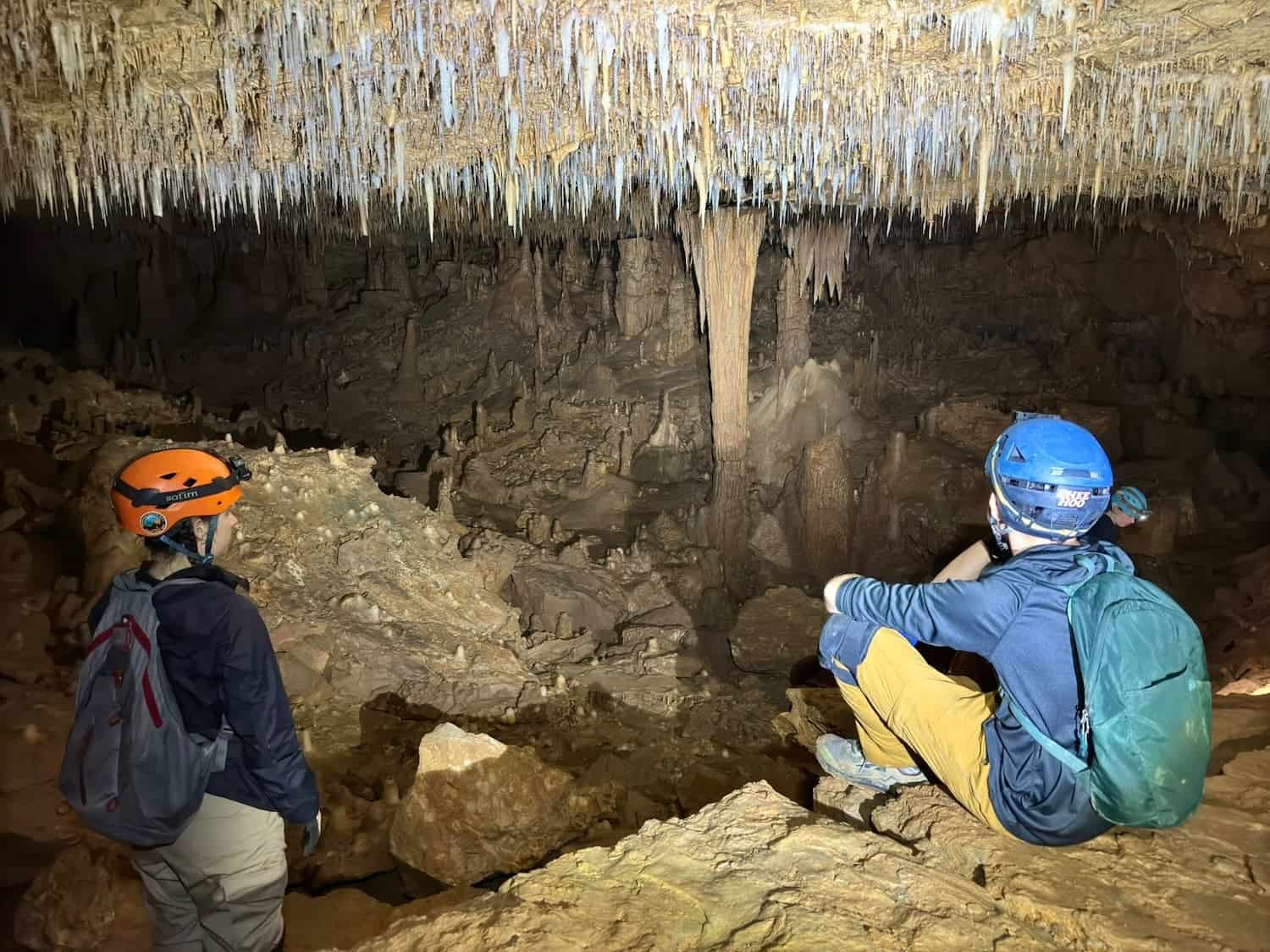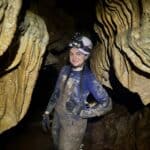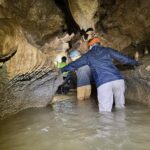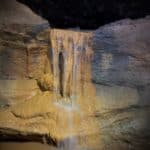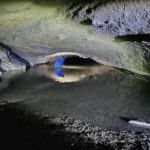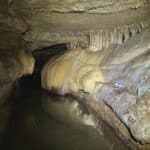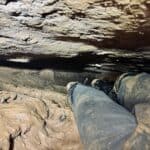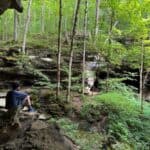- Make Sure You Have the Right Type of Gear
- Travel Tips for Driving to a Cave
- The Importance of Cave Safety, Preservation, and Conservation
- Slow Down and Take It All In
- Keep Safety First with Basic Techniques
- Types of Caves
- Push Your Limits (But Know Them)
- The Do's and Don'ts When Seeing Bats In A Cave
- Cave Critters
- No Graffiti
- Post Caving
- Ready to Begin Your Underground Adventure?
- Bonus Photos
- How Can I Improve This Guide?
Are you ready for your first wild cave experience? Exploring caves is a thrilling way to connect with nature, challenge your limits, and discover otherworldly landscapes hidden beneath the earth’s surface.
If you’re new to caving, this guide will walk you through everything you need to know before heading into your first wild cave. From essential gear to unwritten rules of caving etiquette, here’s how to make your first cave trip safe, enjoyable, and unforgettable.
First things first. We are cavers, not spelunkers. What’s the difference? Cavers are the ones who rescue spelunkers. Now that we’ve cleared that up, the first step to caving is ensuring you have the proper gear for the adventure ahead.
Make Sure You Have the Right Type of Gear
Having the proper gear isn’t just about comfort; it’s about safety. Caves can be dark, damp, and unforgiving, but with the right equipment, you’ll be prepared for anything that comes your way.
For starters, ALWAYS bring a helmet, headlamp, two+ forms of backup lights, extra batteries for your lights, and grippy shoes or boots.
I wrote a guide covering the basics of cave gear. Check out my guide, Essential Cave Gear to Buy (and Tips for Scoring Discounts), if you want to learn what gear you need, what gear is optional, and how to get discounts on gear.
Have your gear ready? Great, let’s talk about enjoying your ride to and from a cave.
Tips:
- Don’t forget to double-check your gear before every trip. You’ll thank yourself once you’re deep underground!
- Check how long your trip is supposed to be and make sure you have enough batteries for your lights so they’ll last longer than the estimated timeframe.
- Check out the linked gear guide to learn about bathroom etiquette.

Travel Tips for Driving to a Cave
Sometimes the trickiest part of caving is simply getting there. Remote caves often mean long drives and rough country roads, so a little preparation goes a long way. Here are some tips to make your drive smoother:
- Offline Maps/Music: Cell reception might be spotty near caves, so download maps/routes for offline use before leaving. Don’t rely on cell reception. These days, most popular mobile map apps allow you to download routes for seamless navigation. Don’t forget to download your music either—unless awkward silence is your favorite genre.
- Travel Apps: When traveling, phone apps can keep you informed about traffic jams, speed traps, and other road conditions. Waze is a popular choice, offering real-time alerts to enhance your journey.
- Fuel Up: Fill your gas tank before you leave urban areas, especially for unfamiliar and remote destinations. Use the Gasbuddy or Upside apps to get discounts on fuel.
- Ride Sharing: Most cave trips begin with a meetup at a convenient location, like a Walmart parking lot. From there, we carpool to reduce the number of vehicles and ensure ample parking space near the cave site.

The Importance of Cave Safety, Preservation, and Conservation
Caving is exciting, but it also comes with responsibilities. Respect for nature and concern for safety should always be the top priorities of cavers. We’re here for exploration and fun, but if we put in a little effort, we can keep these amazing resources available for countless generations to come.
Don’t Touch Cave Formations
Cave formations, or speleothems, like stalactites, stalagmites, and flowstones, can grow over thousands or millions of years. Oils and dirt from your hands can damage them permanently.
Let’s begin by exploring the fundamentals of cave formations.
Tip: If you see a cool rock or crystal, consider it a formation, and look, but don’t touch.

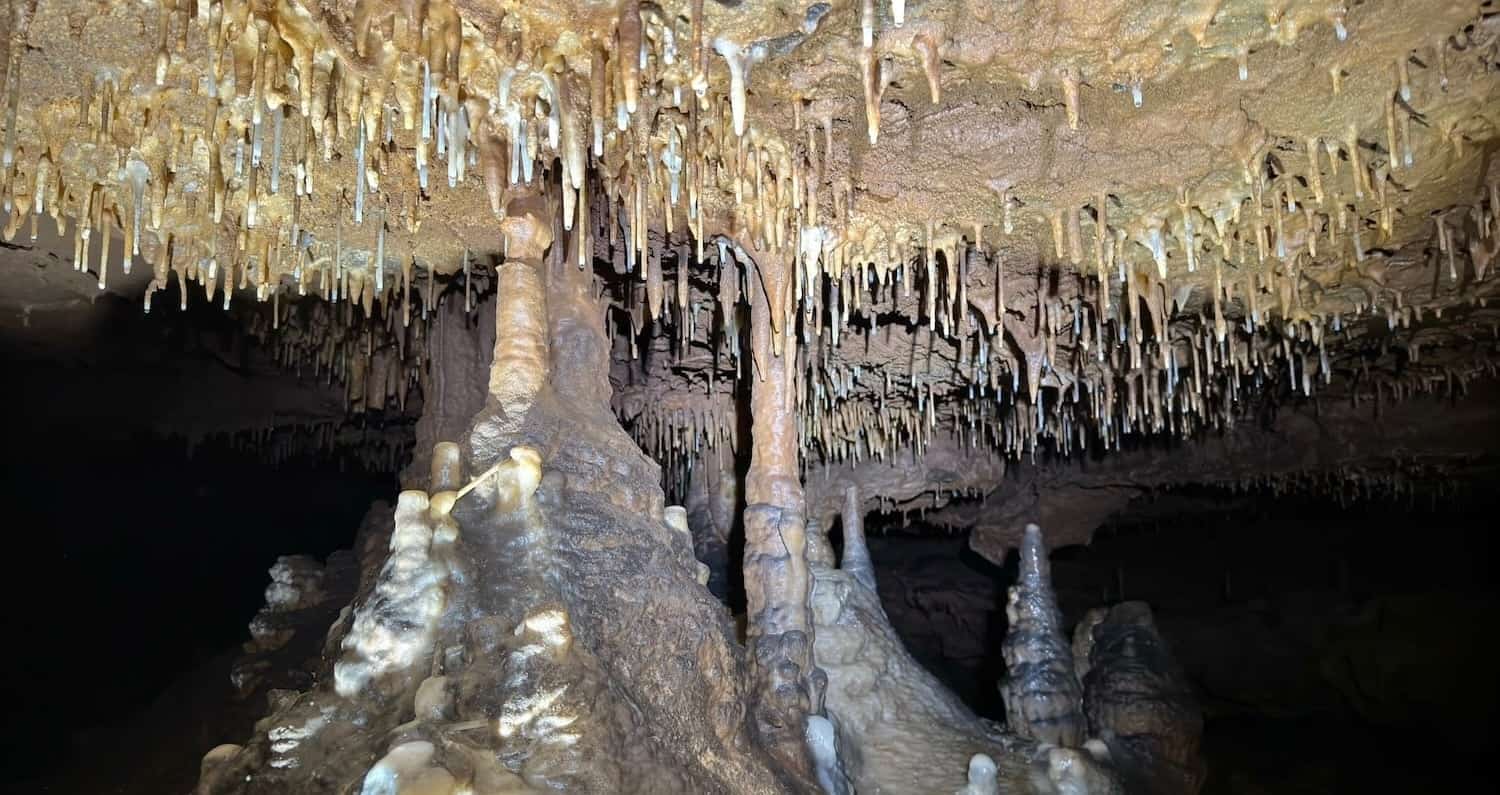
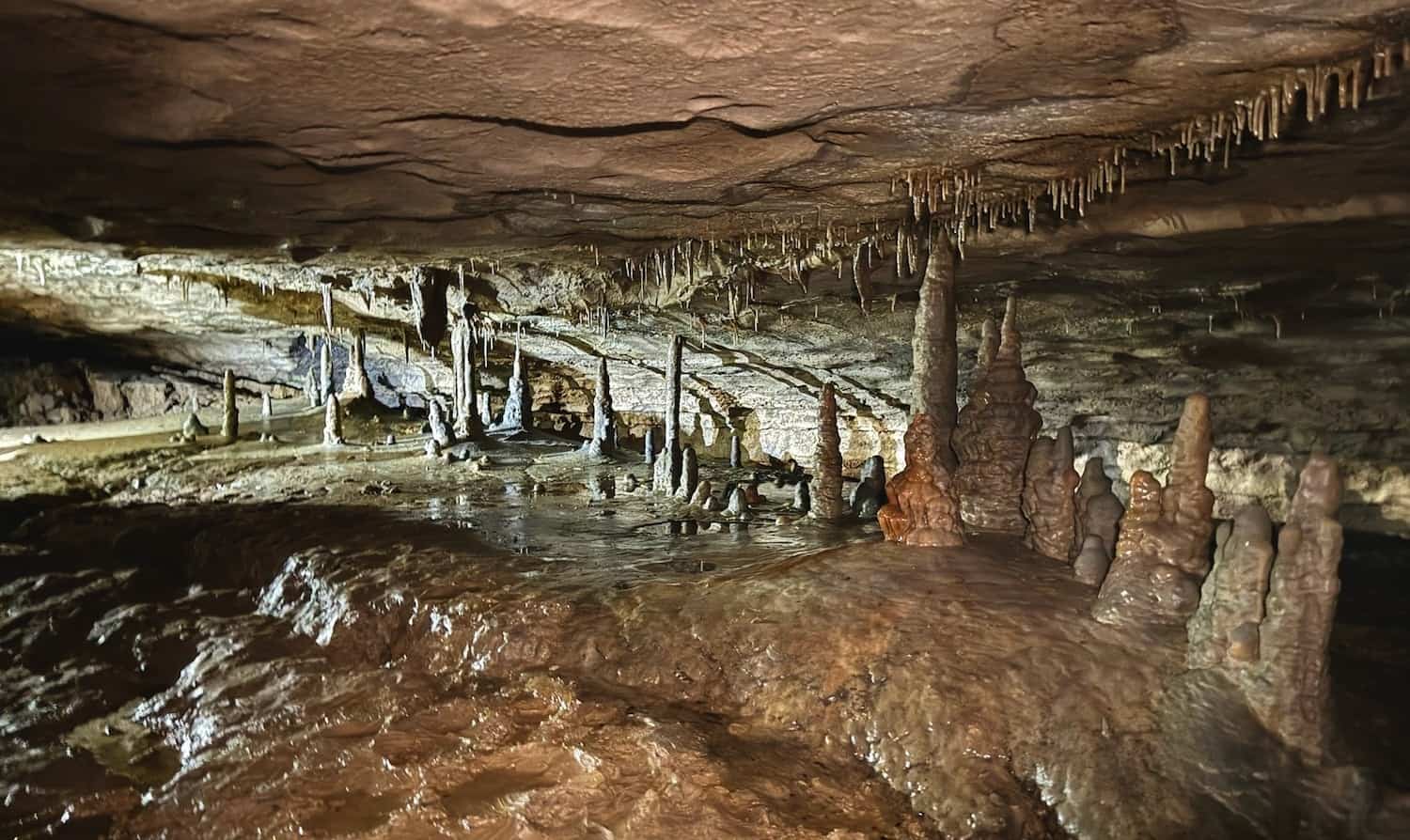
Stalactites and Stalagmites
Stalactites are mineral formations that hang down from the top/ceiling. They usually look like icicles hanging from the ceiling. If you see them, feel free to take a close look. Sometimes, you can see the individual crystalline structures inside them.
Stalagmites are mineral formations that rise from the ground.
A simple way to remember this is that stalactites have a “t” because they hang from the Top of a cave, and stalagmites have a “g” because they rise from the Ground in a cave.
What happens if a stalagmite and a stalactite meet up and connect? Great question! These are called pillars or columns. As a whole, these stalactites and stalagmites can be referred to as speleothems.
Don’t Take Formations
Don’t steal the pretties! When you come across stunning crystals, rocks, or formations, it can be tempting to take a piece home as a keepsake. Resist the urge! This is stealing and illegal. I’ve seen entire chambers ruined by broken and missing formations. This practice slowly erodes the beauty of these natural wonders, leaving nothing for future visitors to admire.
Fun Fact: Even if you spot a broken formation on the ground, leave it where it is. There are experts who specialize in restoring damaged formations, but they can’t complete a restoration if the pieces are taken away. Protect these treasures so they can continue to inspire and amaze for generations to come.

Always Leave No Trace
Pack out everything you bring into a cave, including trash, wrappers, or food scraps. Respect the environment so others can enjoy it just as you did.
Tips:
- Did you find litter in a cave? Bring a trash bag and place any trash you find in your trash bag. You will likely receive an applause from your group!
- A simple bag of chips left behind in a cave can cause a drastic change in an environment. Don’t believe me? Here’s how one bag of chips disrupted a cave ecosystem.

Don’t Share Cave Locations/Names
Have you noticed that it’s hard to find cave locations? There’s a reason for that! While it’s tempting to share a beautiful cave’s “secret” location, resist the urge. Sensitive cave environments are at risk of vandalism, littering, and overcrowding. Keeping locations private helps protect them for future generations.
Don’t share cave names on social media, either. Some caves can be located through a quick Google search, and mentioning their names makes it easier for individuals unfamiliar with cave safety and preservation to find and potentially damage these fragile sites. Protecting caves starts with thoughtful discretion.
Tip: Too often, a cave gains popularity, only to be vandalized and eventually closed to the public. Help protect these natural wonders by doing your part to ensure this doesn’t happen to more caves.
Permission/Permits
Caves are always on someone’s property. Sometimes a State owns the land, but in most cases, caves are on someone’s private property. Do not go in to a cave without first getting permission from the landowner or securing a permit (if applicable).
If you are going on a cave trip with your Grotto, then your trip leader should already have secured permission from the landowner. Otherwise, they’ll tell you how to secure a permit for state or company-owned caves.
Tip: Don’t visit a cave without permission. Many landowners have cameras on their property to observe who enters and exits their caves. Visitors who do not have prior authorization can anger landowners and lead to cave closures for everyone.

Slow Down and Take It All In
Caves are filled with incredible sights you won’t find anywhere else. Breathtaking rock formations, glimmering crystals, and even fossils can be easy to miss if you’re rushing.
I’ve witnessed 10,000-year-old fossilized bear claw marks, corral fossils dating back millions of years, and so much more. I’ve also seen cavers rush and miss incredible formations and entire passageways simply because they were moving too quickly and not paying attention.
Take your time to soak in the magic around you.
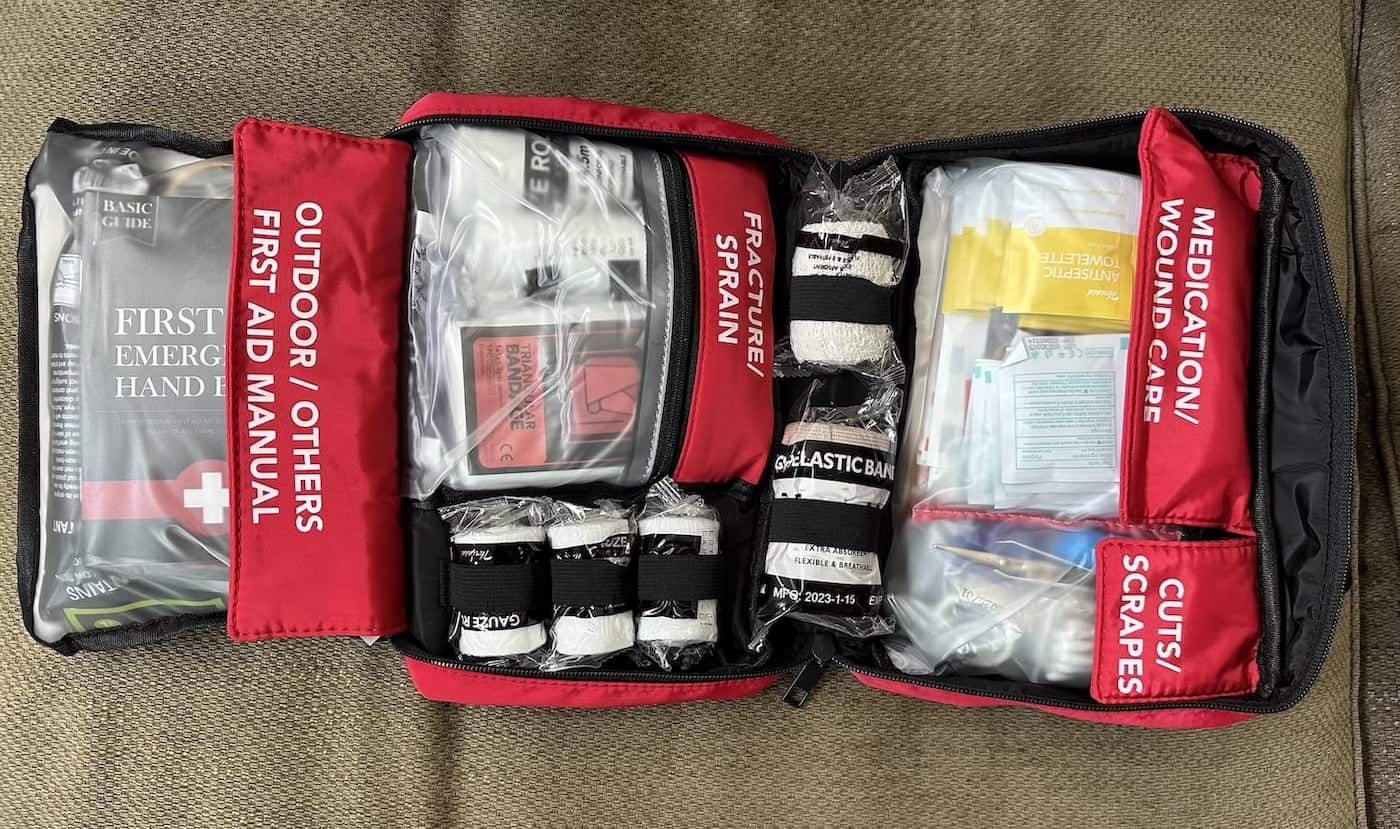
Keep Safety First with Basic Techniques
To stay safe and steady while exploring caves, follow these tried-and-true caving techniques.
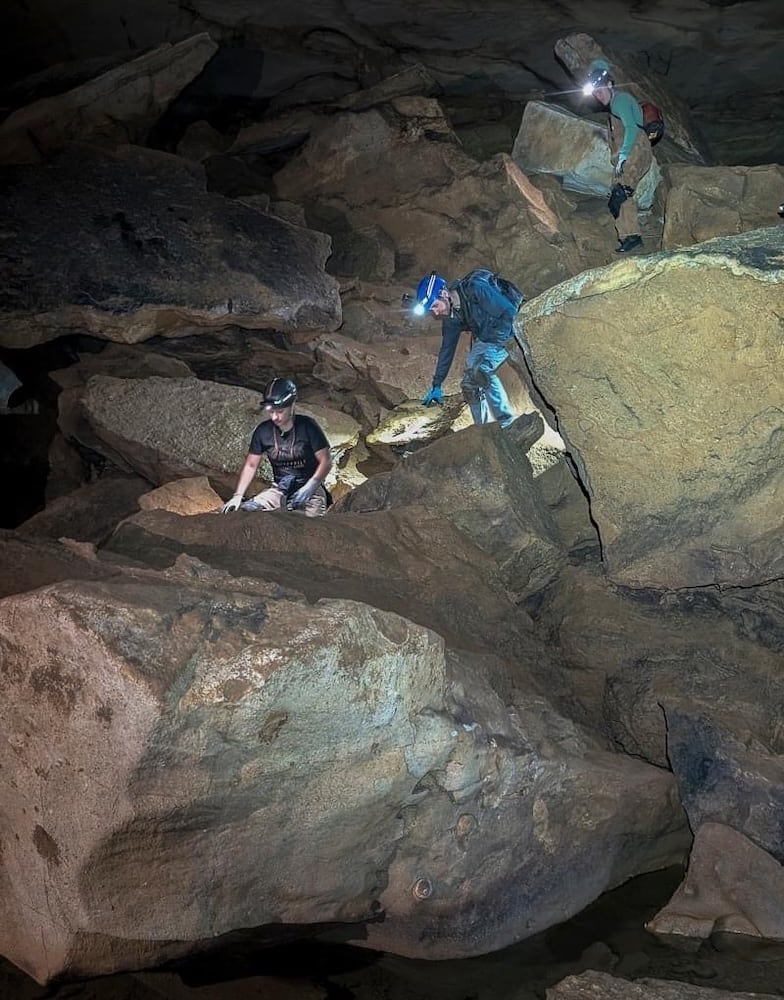
Three Points of Contact
When climbing or walking on non-flat surfaces, try to maintain three points of contact with the ground, walls, or ceiling. This means keeping two hands and one foot (or two feet and one hand) in contact with a stable surface. Caves can be extremely slippery. Following this safety recommendation reduces your risk of slipping, falling, or losing balance.
Five Points of Contact
The five points of contact safety rule is essential when sliding down a hill or boulder in a cave. This technique involves maintaining contact with the ground using both hands, both feet, and your behind. You just sit down and shimmy your way downward.
By distributing your weight across these five points, you improve stability and control, reducing your risk of sliding or injury. This method is particularly useful on slippery or steep surfaces, ensuring a safer descent while minimizing stress on any single point of your body. Always assess the surface conditions and move slowly to maintain proper contact and balance.
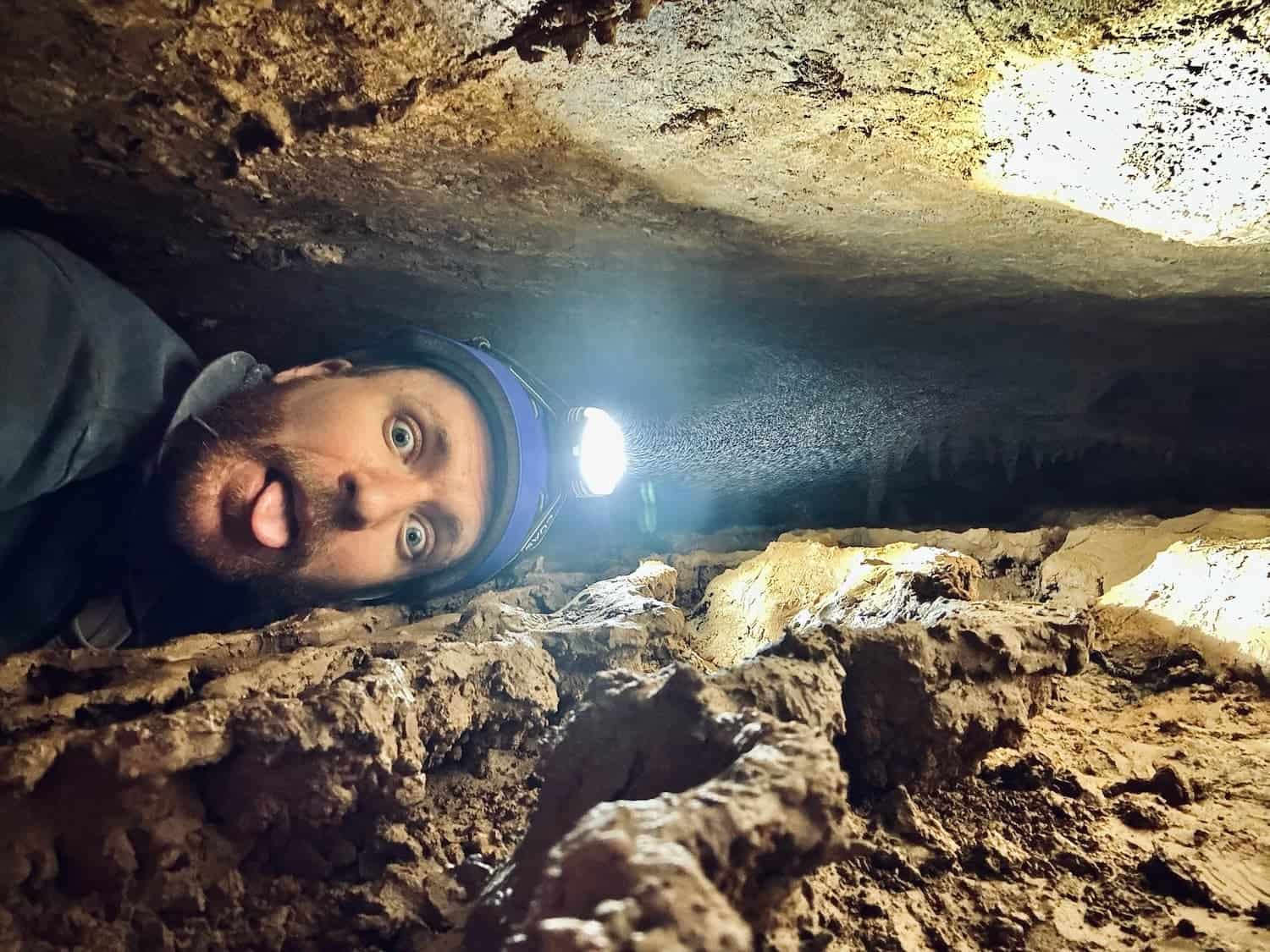
Watch Your Head
Caves are full of low ceilings, sharp rocks, and delicate formations. Keep an eye on the path ahead and above to avoid bumping your helmet or damaging formations.
Tip: Pay attention, even when tired. This is for safety AND preservation. Not only can you hit your head on a sharp rock, but one wrong move and you could destroy tens of stalactites in one fell swoop.
Avoid Jumps/Drops
Whenever possible, avoid jumping or dropping down without being certain of your landing spot. This precaution helps prevent twisted or sprained ankles and reduces the risk of landing on uneven surfaces, slipping, or falling. I once witnessed someone drop from just three feet, unaware of where they would land, only to end up with a sprained ankle.
Don’t Be Afraid to Ask for Help
If you’re struggling with a climb or navigation, speak up. Experienced cavers and guides are there to help. It’s better to ask for advice than to risk injury to yourself or harm to the cave environment.
Be Prepared To Get Dirty
Caving is not a clean activity, so be prepared to get dirty! Many caves are filled with mud, which can easily coat your clothes, boots, and hands as you crawl or climb through passages. Additionally, water is often present, whether from underground streams, pools, or dripping stalactites, meaning you’re likely to get wet too. Don’t forget to pack a change of clothes for after your adventure to stay comfortable and dry.
Remember, the mess is part of the fun and an essential part of the caving experience!
Cleaning Tips
Properly cleaning your gear is essential for any caving adventure. Here are a few tips to keep your equipment in top condition:
- Thoroughly clean your gear after every trip. The mud can carry diseases from cave to cave if you don’t clean your gear. Prevent the spread of WNS in bat species by cleaning your gear thoroughly after every trip.
- Wash your clothing as soon as you can after a trip. Once you cave enough, you’ll notice your clothing starts to smell like a “cave.” If this happens, repeatedly wash your clothes until the strange smell is gone. You can use Oxyclean in your wash to speed up this process.
Types of Caves
Horizontal vs Vertical
You may see the terms horizontal and vertical in the descriptions for cave trips.
A horizontal cave is one where you can walk, crawl, or climb your way through the cave without gear.
A vertical cave requires climbing gear to navigate. Do not sign up for a vertical cave trip unless you own the necessary gear and know how to use it properly. Want to get into vertical caving? Express your interest to members of your Grotto. You’ll eventually stumble upon someone willing to show you the ropes.
Dry Caves vs Wet Caves
Dry caves, as the name suggests, are mostly free of water. A beginner-friendly dry cave makes for a great first wild cave experience. They make for a great training ground as you get familiar with caving before you explore more exotic caves filled with water.
Wet caves are exciting but bring added challenges. These caves house streams, underground rivers, or even deep pools of water. You can expect anywhere from ankle deep water to full submersion. Many wet caves have cold water where a wet suit is necessary to stay warm. Choosing to visit a wet cave for your first cave experience may overwhelm you.
Whether you plan to visit a dry or wet cave for your first cave trip, it is good to understand the difference.
Cave Difficulty
You’ll quickly learn that every cave is unique. This means every cave has its own challenges to face. For your first cave trip, I suggest choosing a trip labeled as beginner-friendly.
It may be fine to choose a trip labeled as moderate, but I do not recommend choosing anything past moderate for a first time wild cave experience.
It’s best to build up your comfort, confidence, and skills before diving into more complex cave trips.
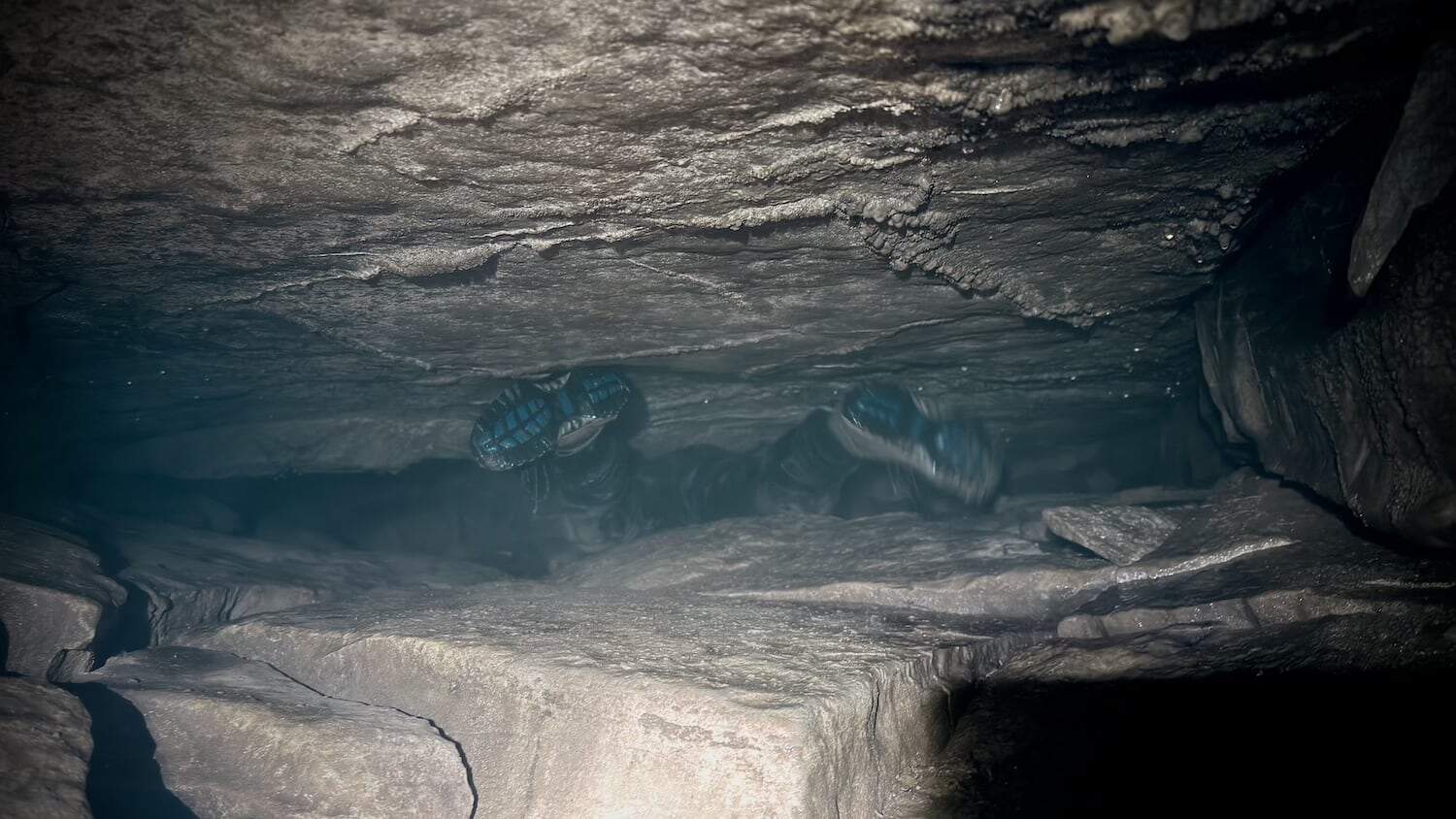
Push Your Limits (But Know Them)
Caving can be physically and mentally challenging. You might find yourself out of your comfort zone, from tight crawls to steep climbs. But don’t be discouraged!
Take things one step (or crawl) at a time, and remember that practice makes perfect. Many new cavers start off hesitant with tight spaces but grow to enjoy the thrill of conquering them.
That said, always know your limits.
- If a passage feels beyond your ability, there’s no shame in stopping.
- If you’re exhausted and need a break, it’s okay.
- If you need a snack, it’s okay for the group to take a break.
Let the other members know if you’re hesitant to navigate a cave feature or need a break! We can share advice and help you make your way. Otherwise, you may be given the option to sit back, relax, and wait while part of the group continues before making their way back to you.
Tip: Your safety is a top priority. Don’t hesitate to speak up if you ever feel uncertain about something. We’re all here as friends and more than willing to help.
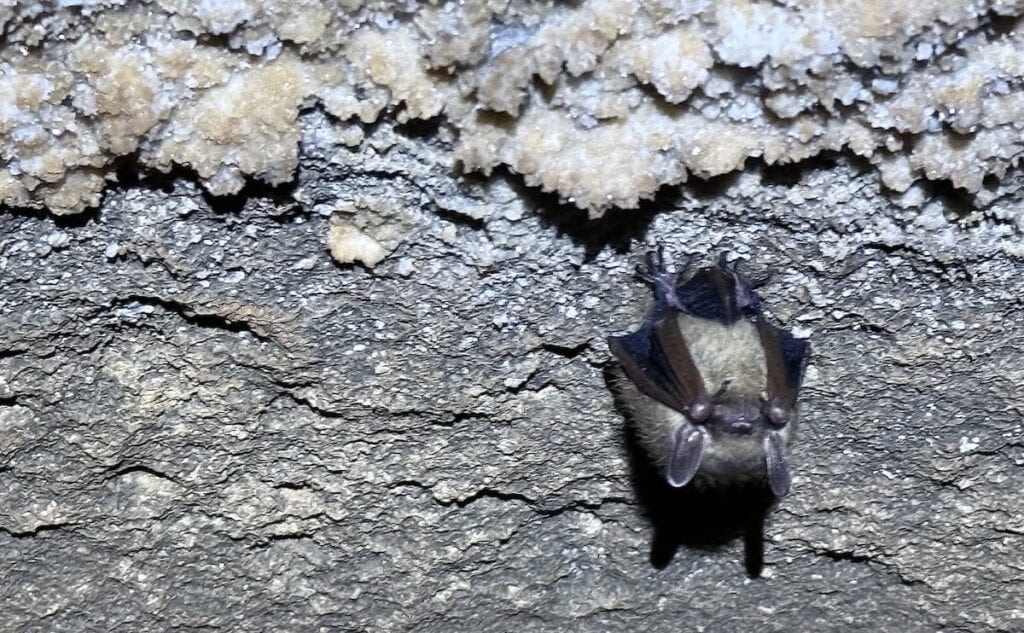
The Do’s and Don’ts When Seeing Bats In A Cave
Encountering bats in their natural habitat can be an awe-inspiring experience, but it’s important to act responsibly to protect both yourself and these incredible creatures. Here are some key do’s and don’ts to keep in mind:
Do’s
- Keep Your Distance: Observe bats quietly from afar to avoid disturbing them. Remember, their roosting areas are critical for their survival.
- Use Minimal Light: If you see a bat, avoid shining your light on it. Bright white lights can disturb bats. During hibernation, bright lights can cause bats to wake up early, increasing their potential of starving to death. During maternity season, disturbing bats can cause mothers to drop and kill their babies. We love bats, so let’s respect their privacy.
- Report Unusual Sightings: If you notice sick, injured, or dead bats, you may notify the appropriate conservation organizations or cave management authorities so they can investigate further.
- Respect Closed Areas: Some caves may restrict access during certain seasons to protect bat populations, especially during winter (hibernation season) and Spring (maternity period).
Don’ts
- Avoid Loud Noises: Shouting, clapping, or making other loud sounds can stress bats and disturb their natural behaviors. Notice a bunch of bats flying around? Yeah, they heard you coming and are now in freak-out mode.
- Avoid Taking Pictures: Taking pictures of bats in a cave, especially when using flash, can disturb and disorient them. The sudden light may cause stress, disrupt their natural behavior, or even wake them during hibernation, which could have harmful consequences for their survival.
- Never Touch Bats: It’s best to avoid handling bats for everyone’s safety. As wild animals, they can transmit diseases through contact. While bat bites are extremely rare, seeking medical attention is important if you suspect you’ve been bitten. Bats typically avoid humans, but if a bite occurs, there is a risk of rabies, which can be transmitted to humans. Thanks to their tiny, sharp teeth, a bat’s bite can be so subtle that you might not even notice it.
- Don’t Bring Contaminants Into A Cave: Ensure your clothing and equipment are clean to prevent the spread of White-Nose Syndrome (WNS). This fungal disease has devastated bat populations globally.
What Is White-Nose Syndrome (WNS)?
WNS is caused by a fungus called Pseudogymnoascus destructans and has been identified as a major threat to bat populations. It disrupts their hibernation cycles, leading to severe energy depletion and often death. To help combat WNS, never enter a cave with clothing or gear that has been in another cave unless thoroughly decontaminated. Staying informed and taking preventative measures is crucial to protecting bats from this deadly disease.
If you know of a reliable resource on properly cleaning cave gear, please share it with me. I’d love to include more detailed information on this topic.

Cave Critters
Exploring caves offers the opportunity to encounter a variety of fascinating creatures. The underground world is teeming with life, from cave crickets and spiders to salamanders, flies, crayfish, and fish. If you happen to spot a pale, possibly eyeless creature, you may have discovered a blind cave organism, such as a blind crayfish or fish, uniquely adapted to the dark environment.
What does this mean for you as a caver? It’s important to tread carefully, especially in streams. A single misplaced step could unintentionally harm these delicate creatures. Always be mindful of your surroundings to avoid disturbing cave wildlife—or being startled by them yourself.

No Graffiti
Graffiti in caves can permanently damage the delicate natural environment. Many caves take thousands or even millions of years to form, and the addition of paint, scratches, or carvings disrupts their pristine beauty.
Graffiti can destroy fragile formations, obscure historical or scientific features, and introduce harmful chemicals into the ecosystem. Additionally, it detracts from the experience of other visitors who seek to appreciate the cave’s untouched wonder. By avoiding graffiti (and telling others to avoid it), we help preserve these incredible natural wonders for future generations to explore and admire.
Tip: Just don’t do it. You could end up in jail by doing so. In early 2025, 3 defendants were sentenced to 90 days in jail for spraying graffiti in a cave. While the jail term was downgraded to probation, they had to pay $6,400 in restitution for the benefit of Southeastern Cave Conservancy (SCCI) and are banned from all SCCI caves during thier probabtion.
Post Caving
Here are a few considerations to keep in mind after your caving adventure.
Check for a Shared Photo Folder: After a trip, your trip leader may send everyone a cloud folder to upload and share photos or videos from the adventure. Keep an eye out for the link so it’s easy to swap memories with the group. Make sure you share your email and phone number in the directory on your grotto’s website so trip leaders can contact you.
Bring Spare Clothes: Caving can leave you soaked, muddy, or both. Packing a set of dry clothes to change into ensures a warmer, more comfortable ride home. You can bring a trash bag for dirty clothes to keep your vehicle clean.
Bring a Wireless Battery Pack: A wireless battery pack can be a lifesaver if your phone supports wireless charging. Caves can be demanding on devices—water or debris can block your charging port, leaving you unable to charge your phone. This can be a problem if you rely on your phone for navigation on the way home. A wireless charger provides a backup solution while your port dries out. On one of my trips, a pebble got stuck in my phone’s charging port, and my wireless battery pack saved the day until I could remove the pebble with a toothpick.
Join the After-Party Fun: Some trip leaders arrange post-caving get-togethers, often at a nearby restaurant, where the group can unwind, swap stories, and relive the trip’s best moments. Mexican restaurants are a popular choice, though locations can vary. It’s a great opportunity to keep the fun going and strengthen the bond with your crew—don’t miss out!
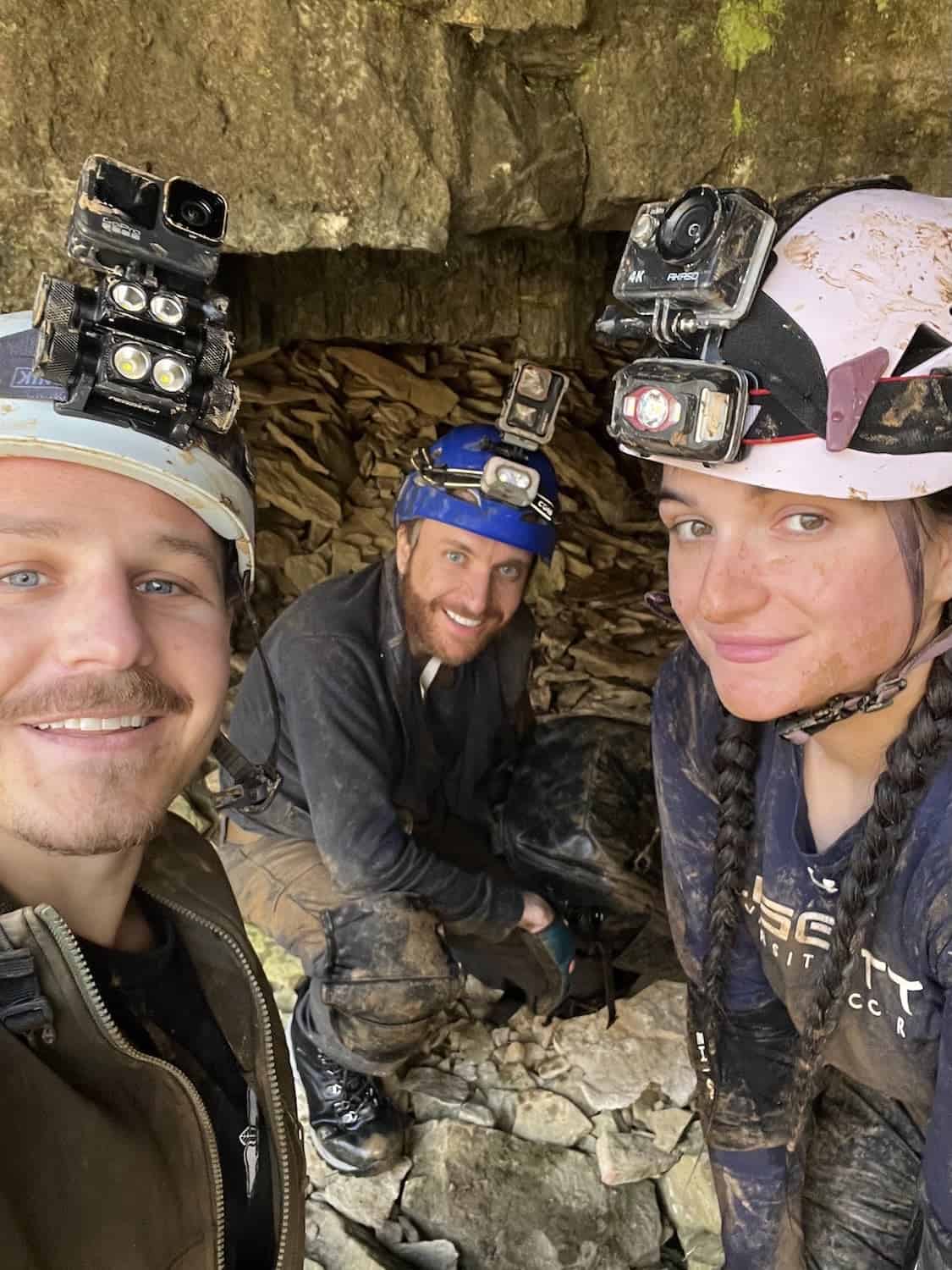
Ready to Begin Your Underground Adventure?
Caving is an incredible way to explore a hidden world few people get to see. With the right preparation, gear, and mindset, you can have an unforgettable experience on your first cave trip.
We’ve got you covered if you don’t know where to start! Sign up for a cave trip on your Grotto’s website and begin your underground adventure. The experienced trip leaders are ready to show you the ropes and share their passion for the subterranean world.
Tip: Is the trip you want to join fully booked? Don’t worry—join the waitlist! Many participants secure a spot this way, so you still have a chance to join the adventure.
Bonus Photos
Ever wondered what secrets lie hidden in and around caves? Swipe through my photos to get a glimpse of the magic that waits beneath your feet.
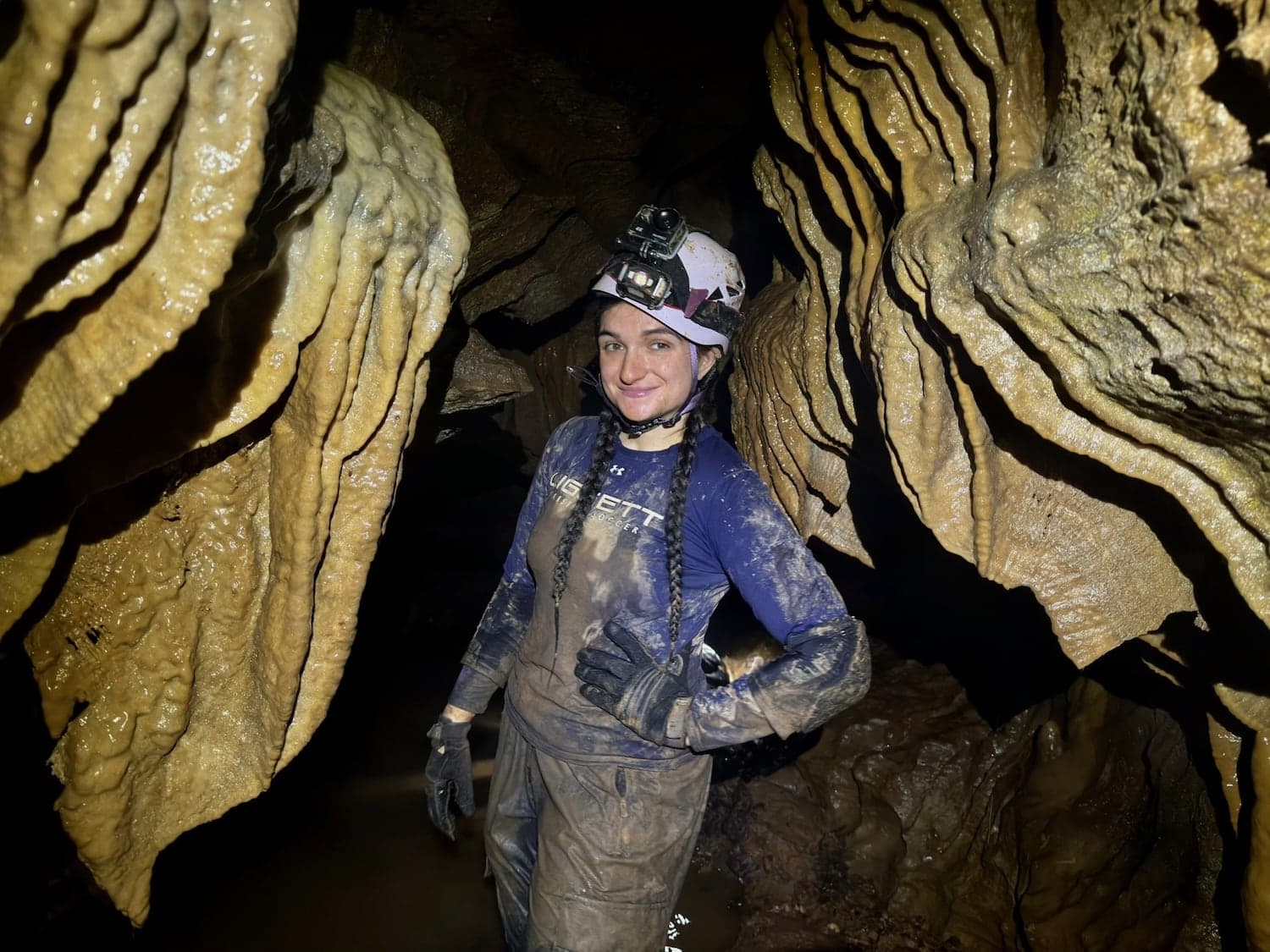
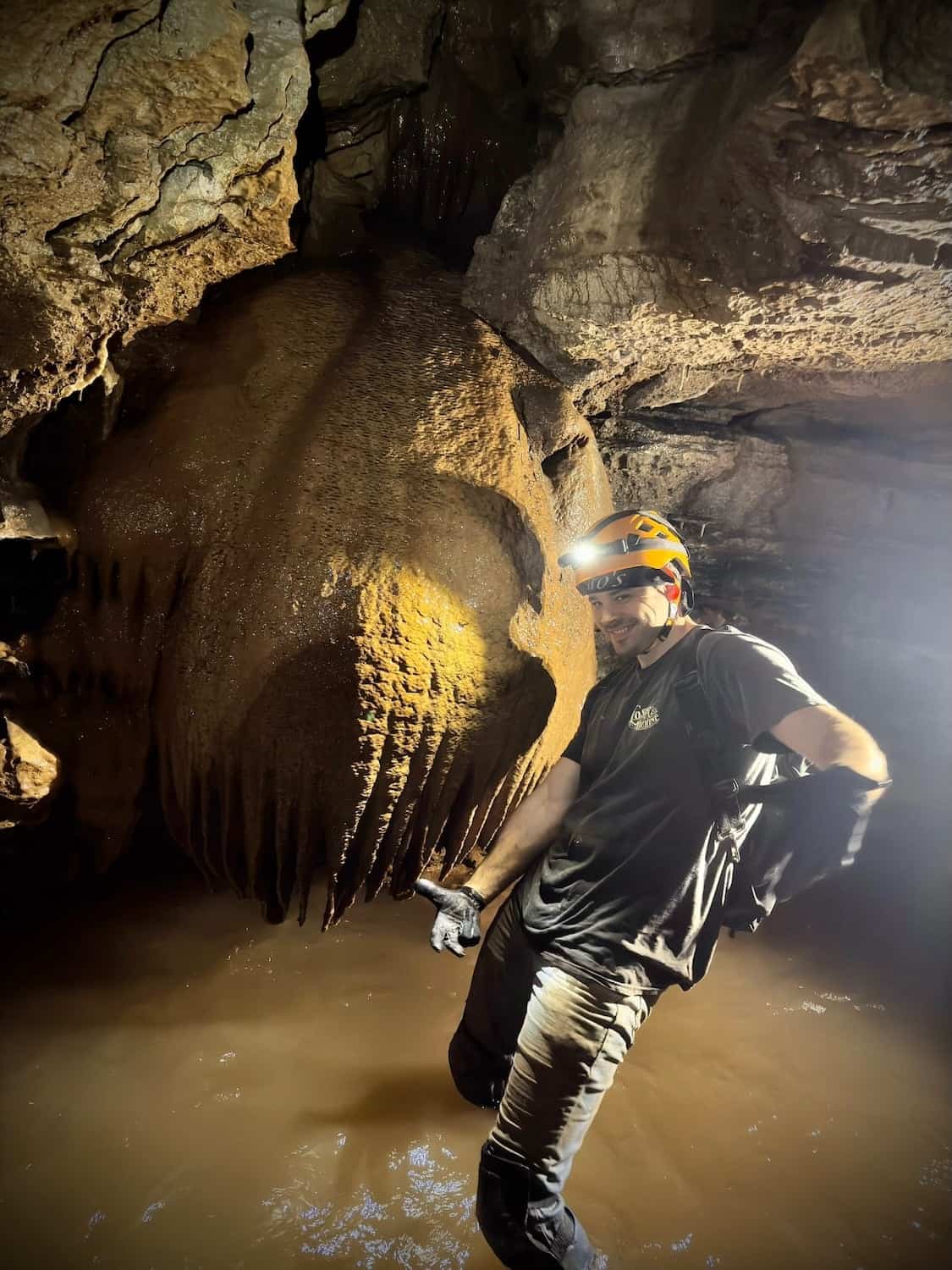
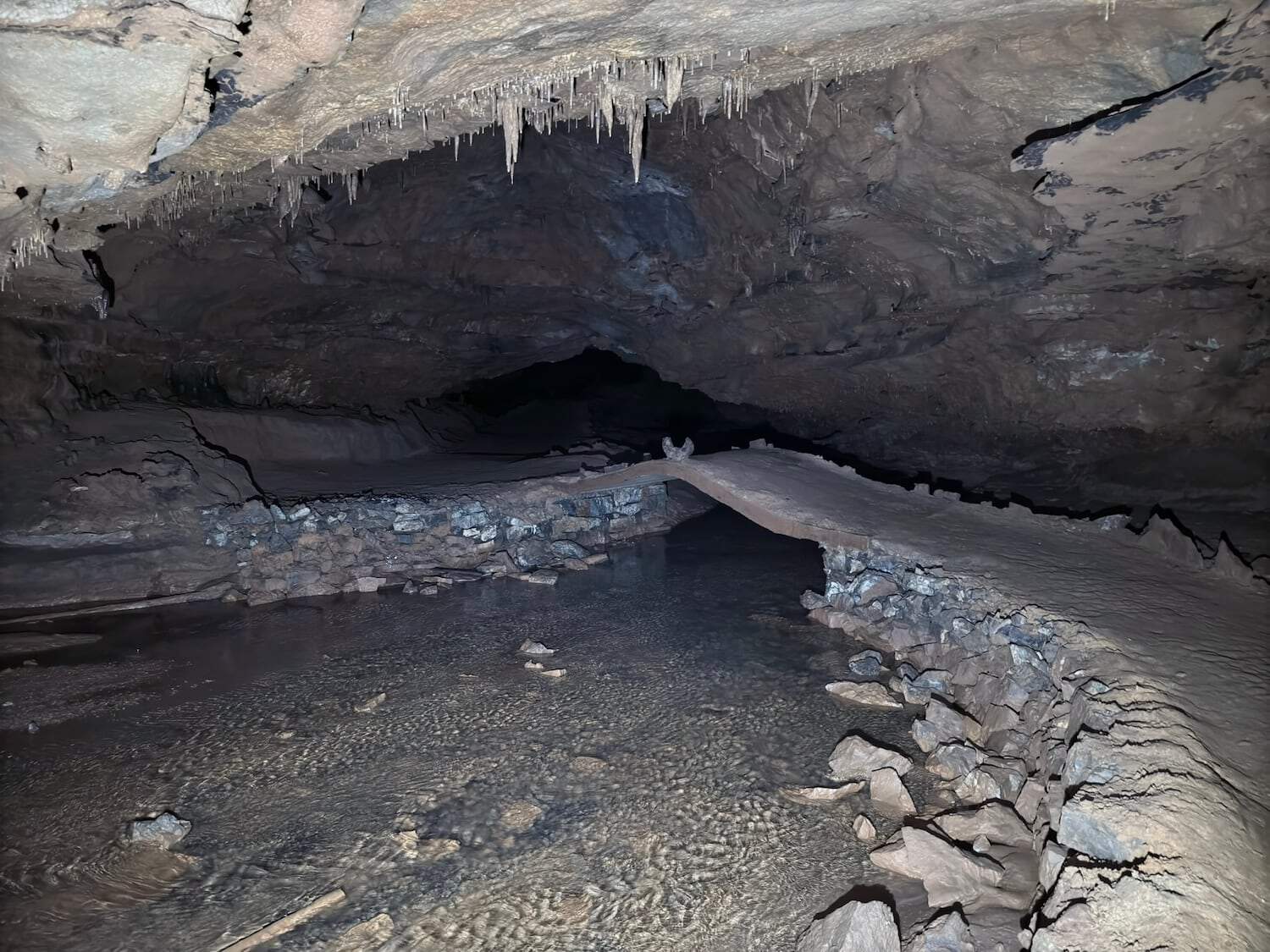
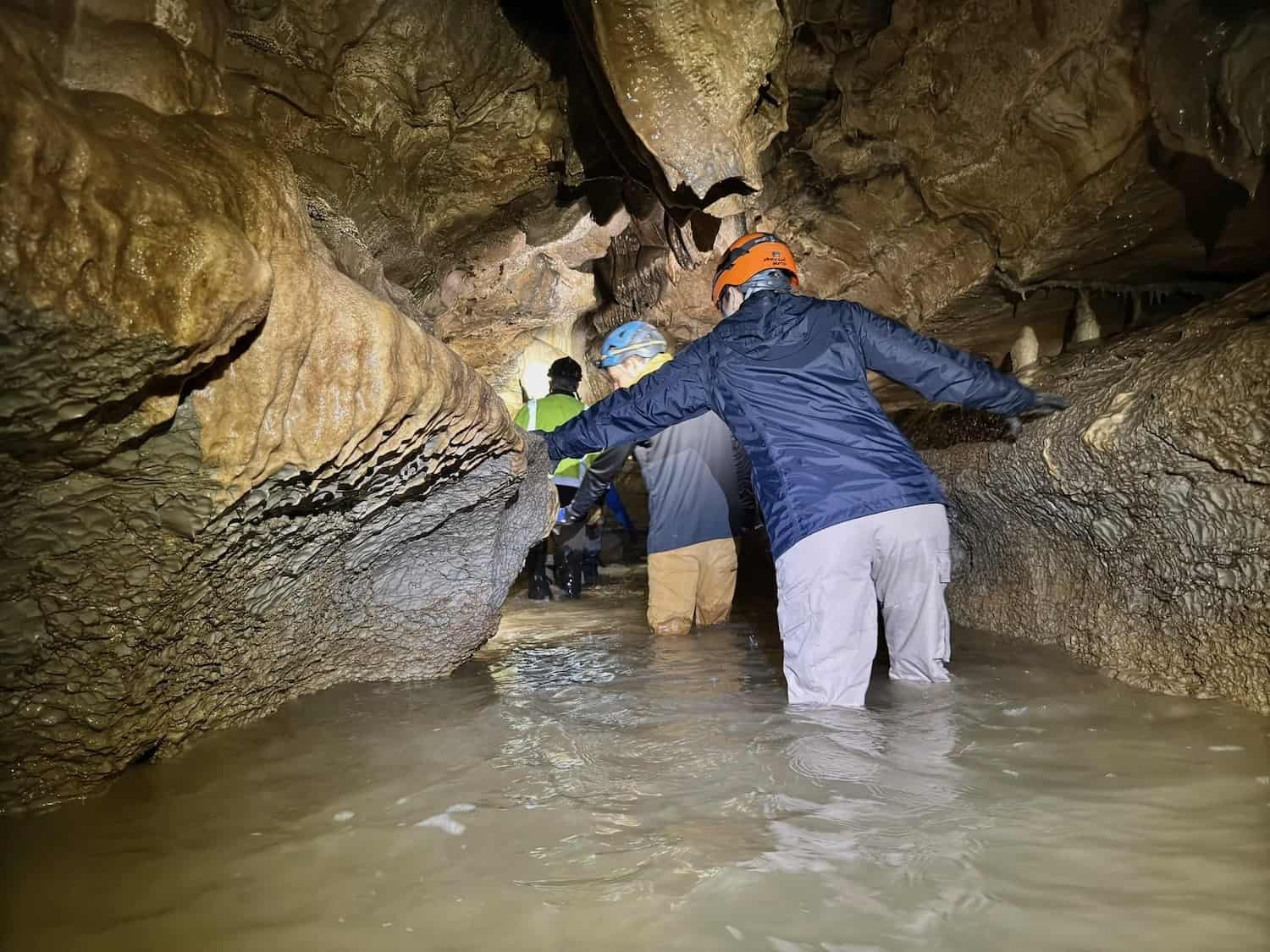
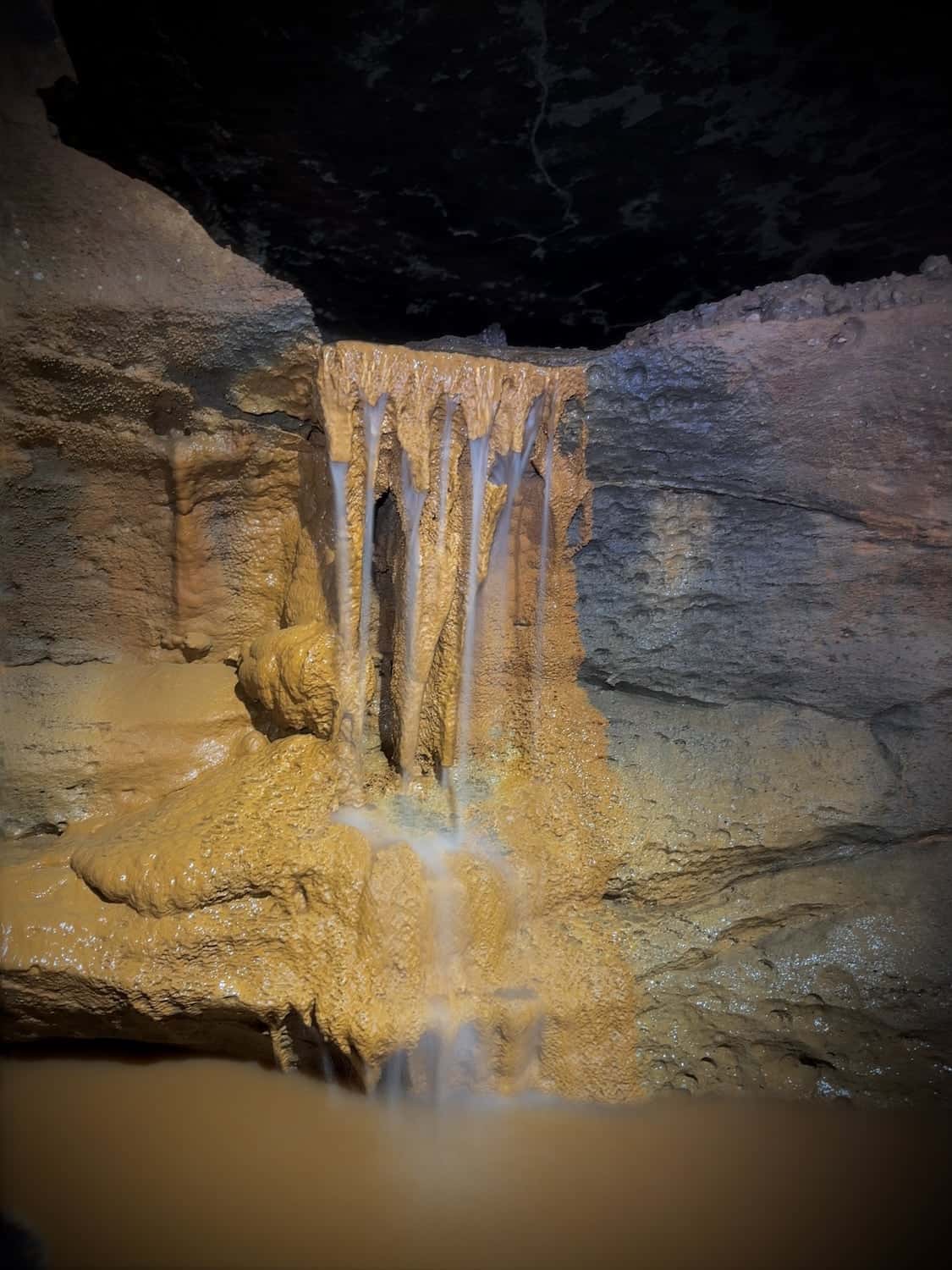
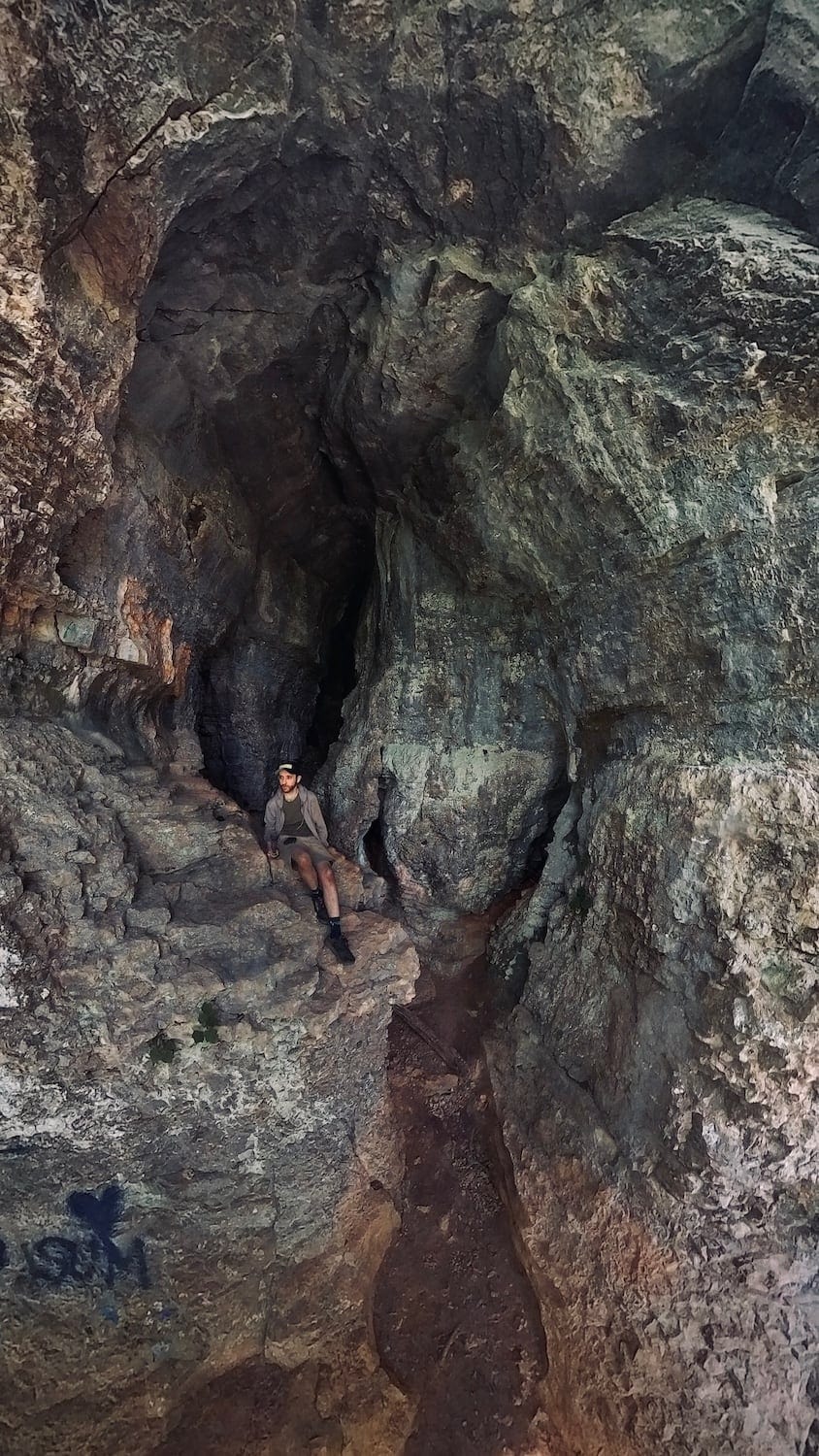
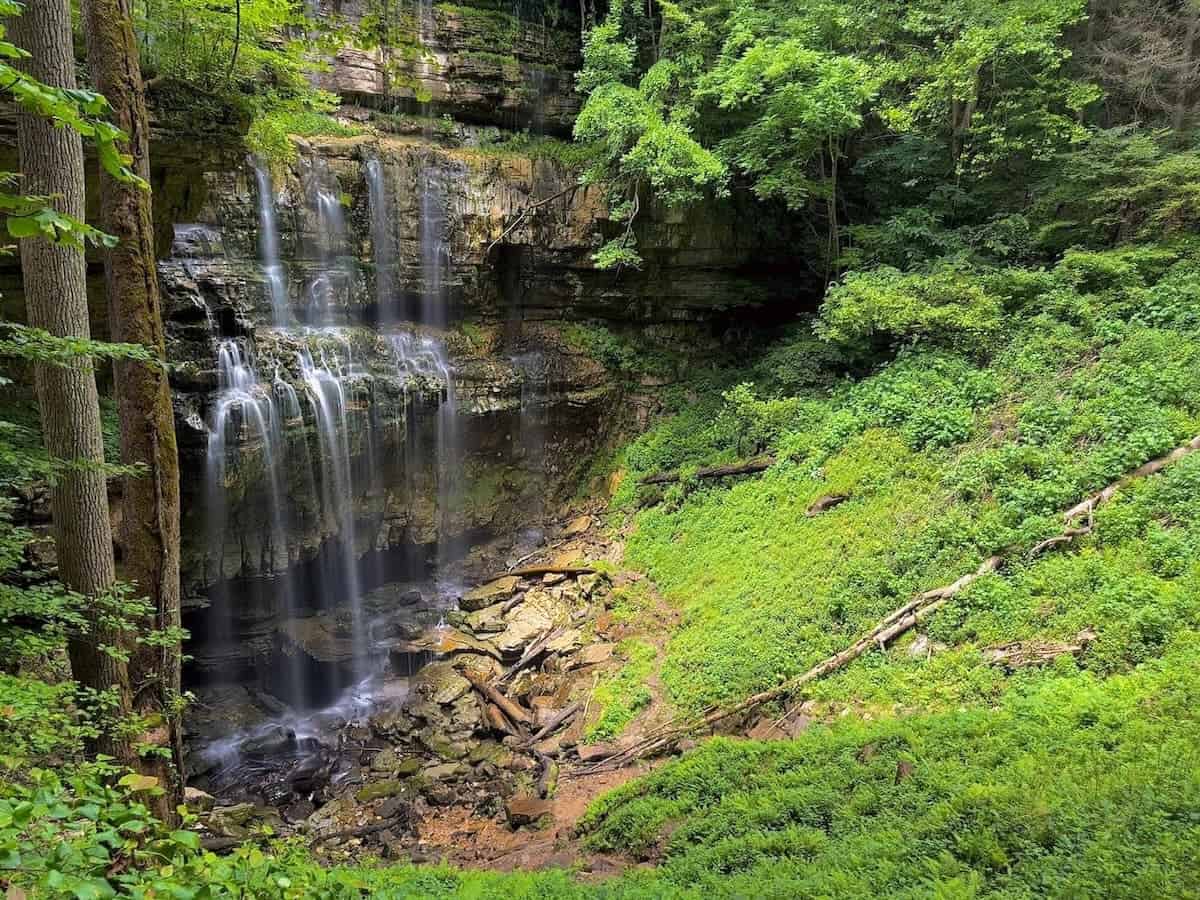

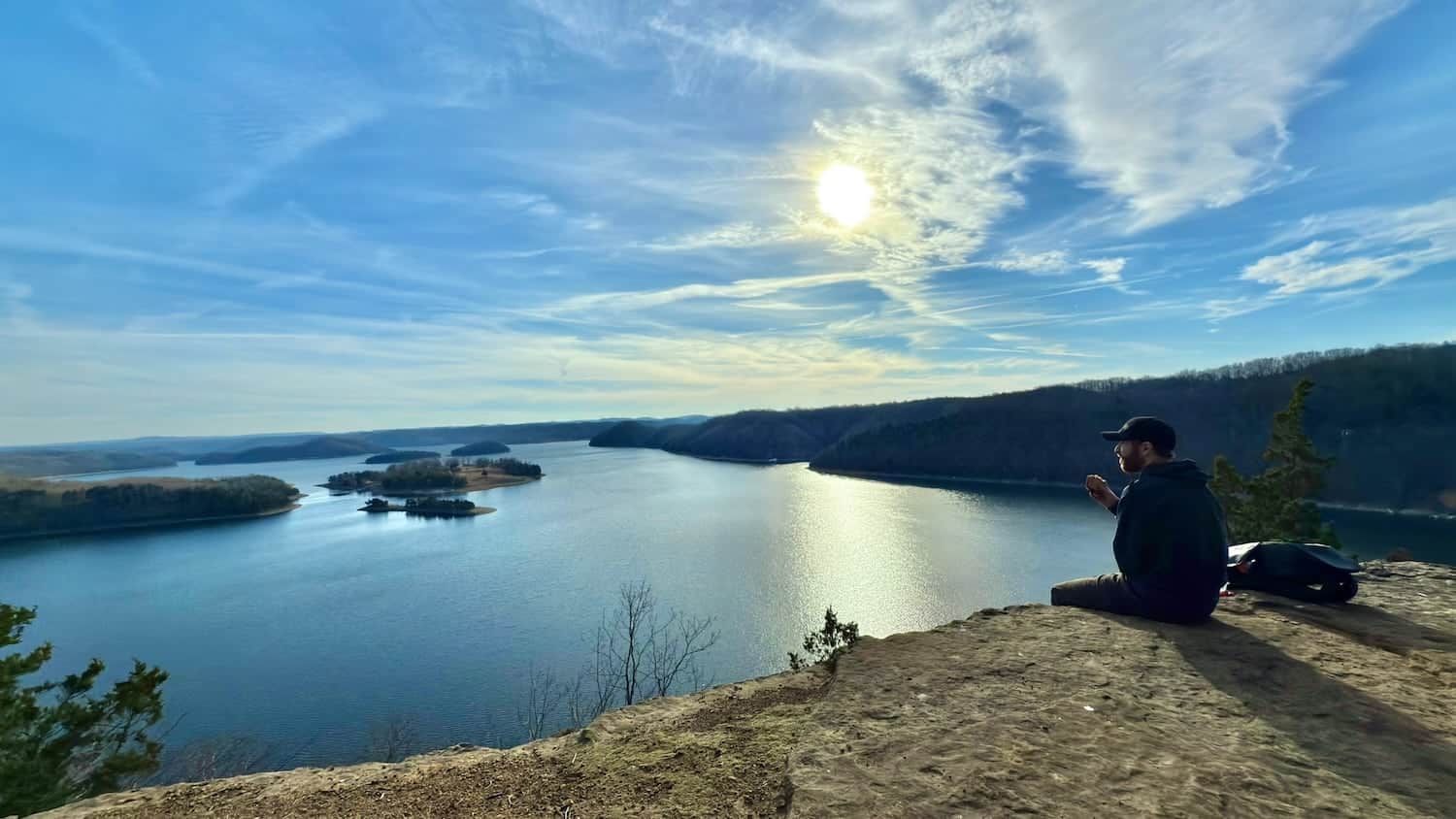

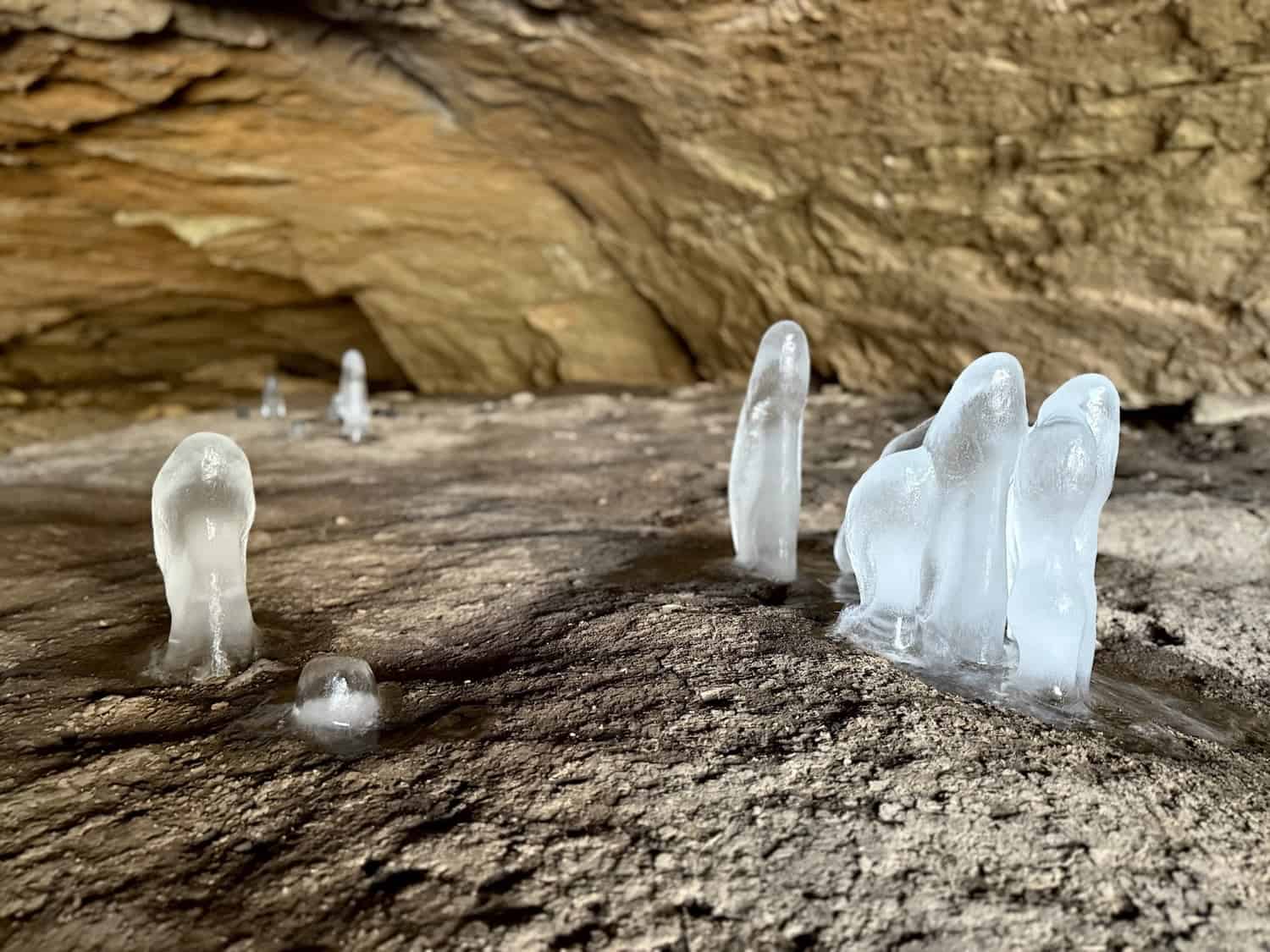

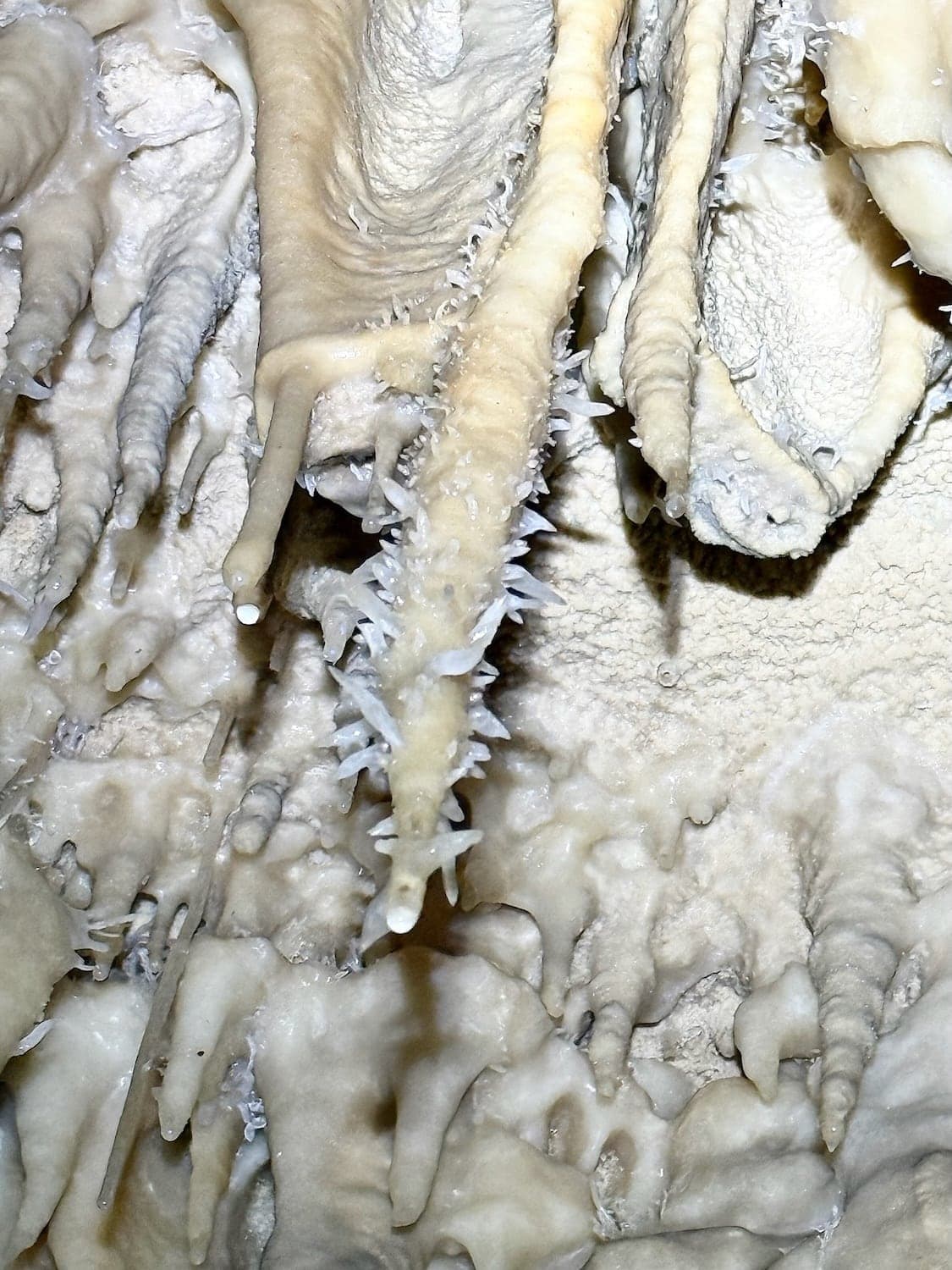
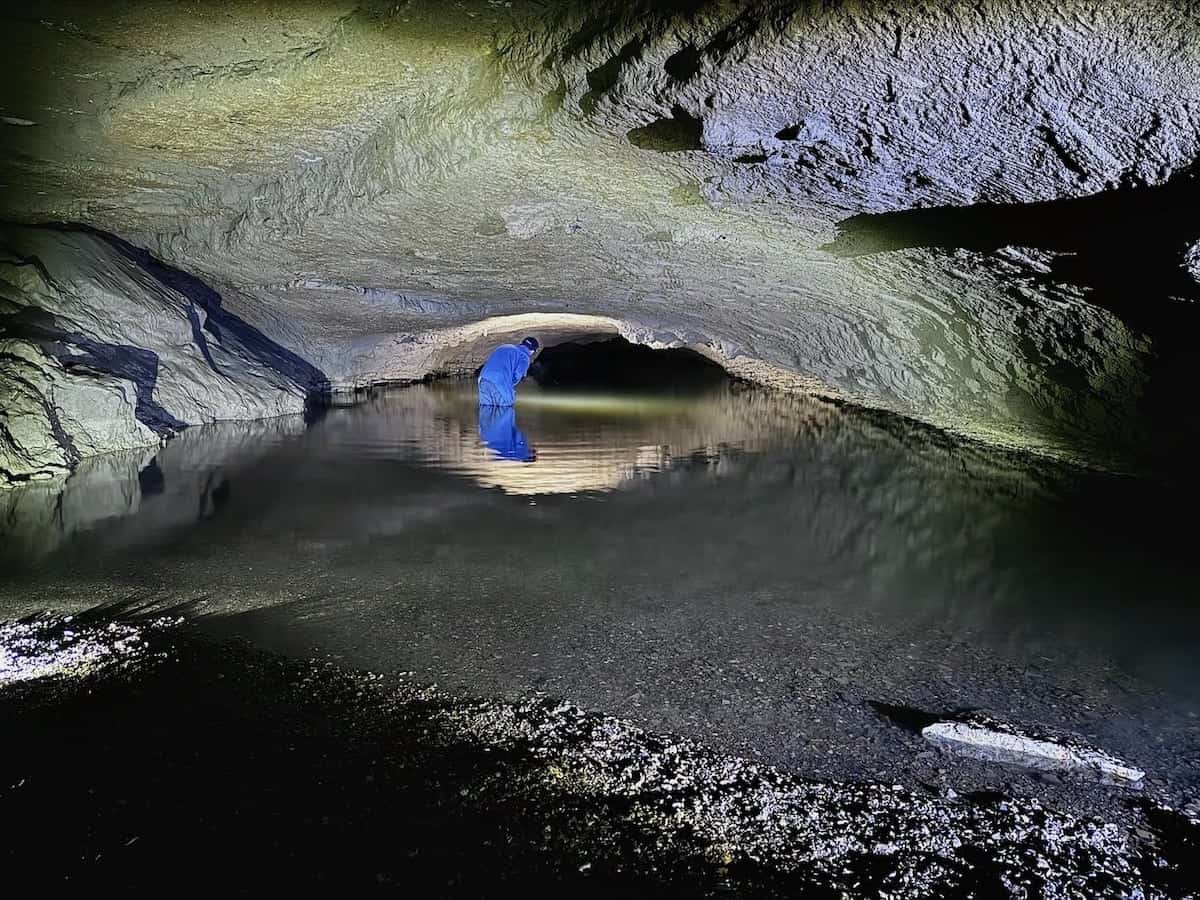

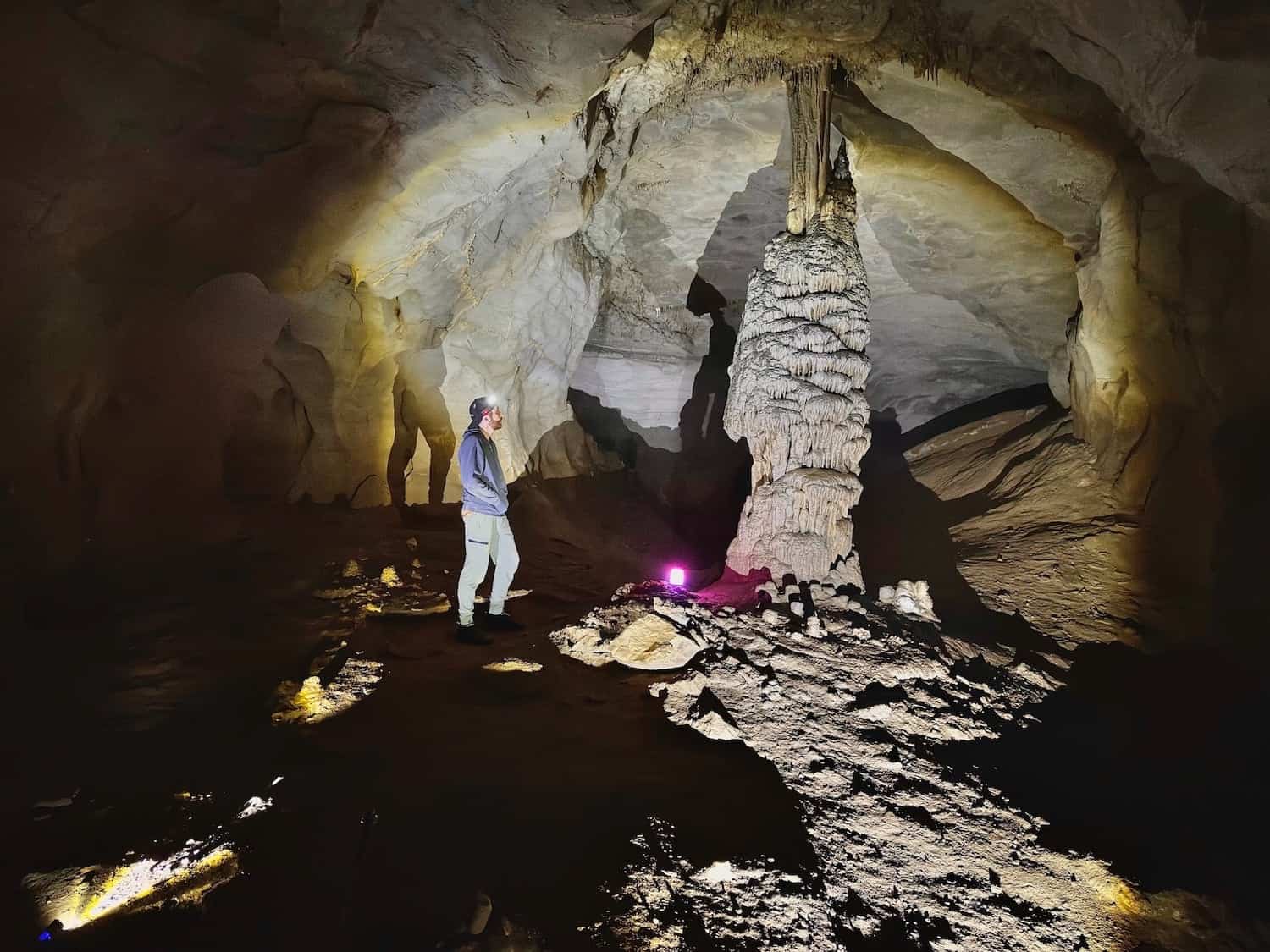
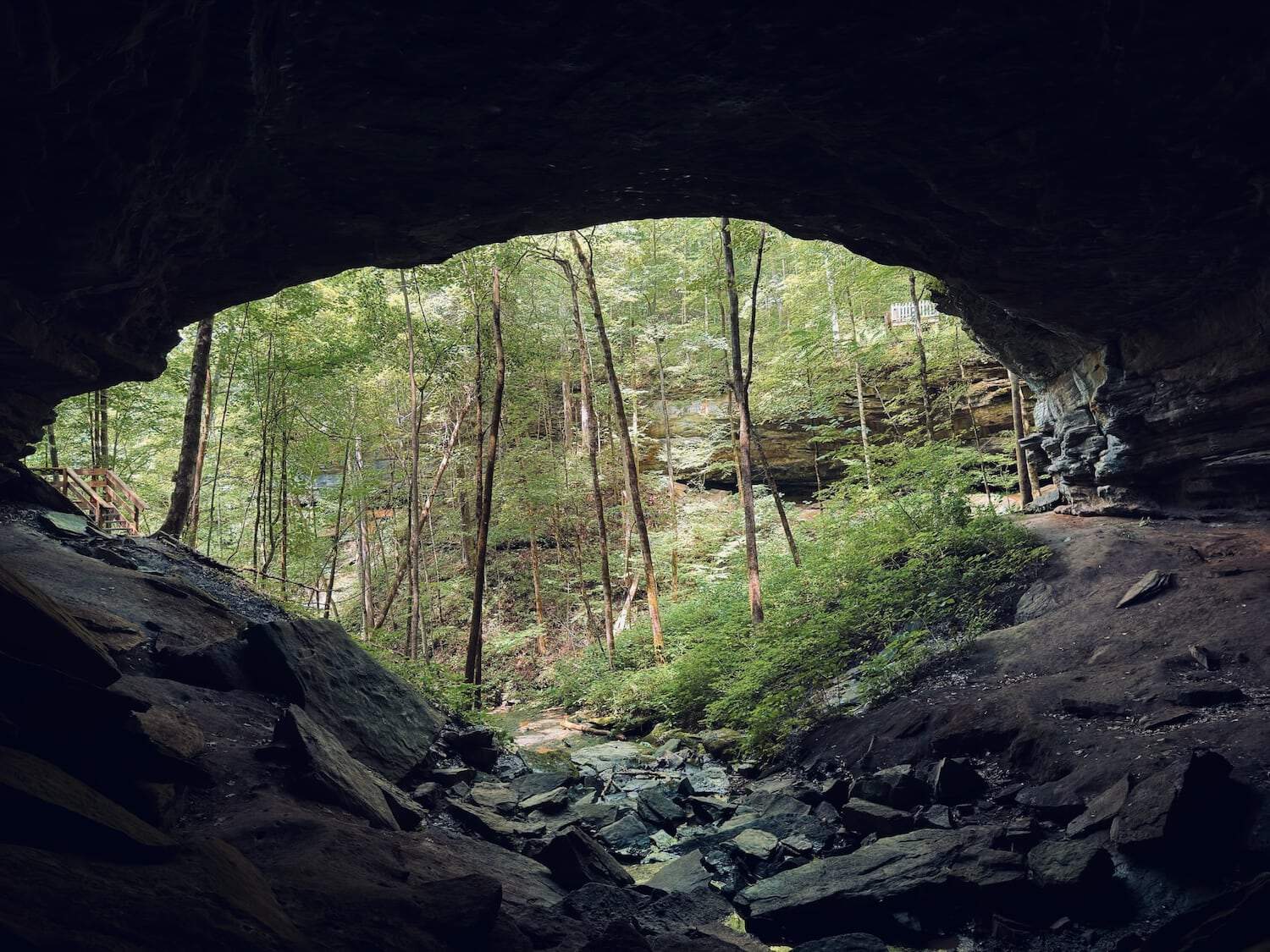


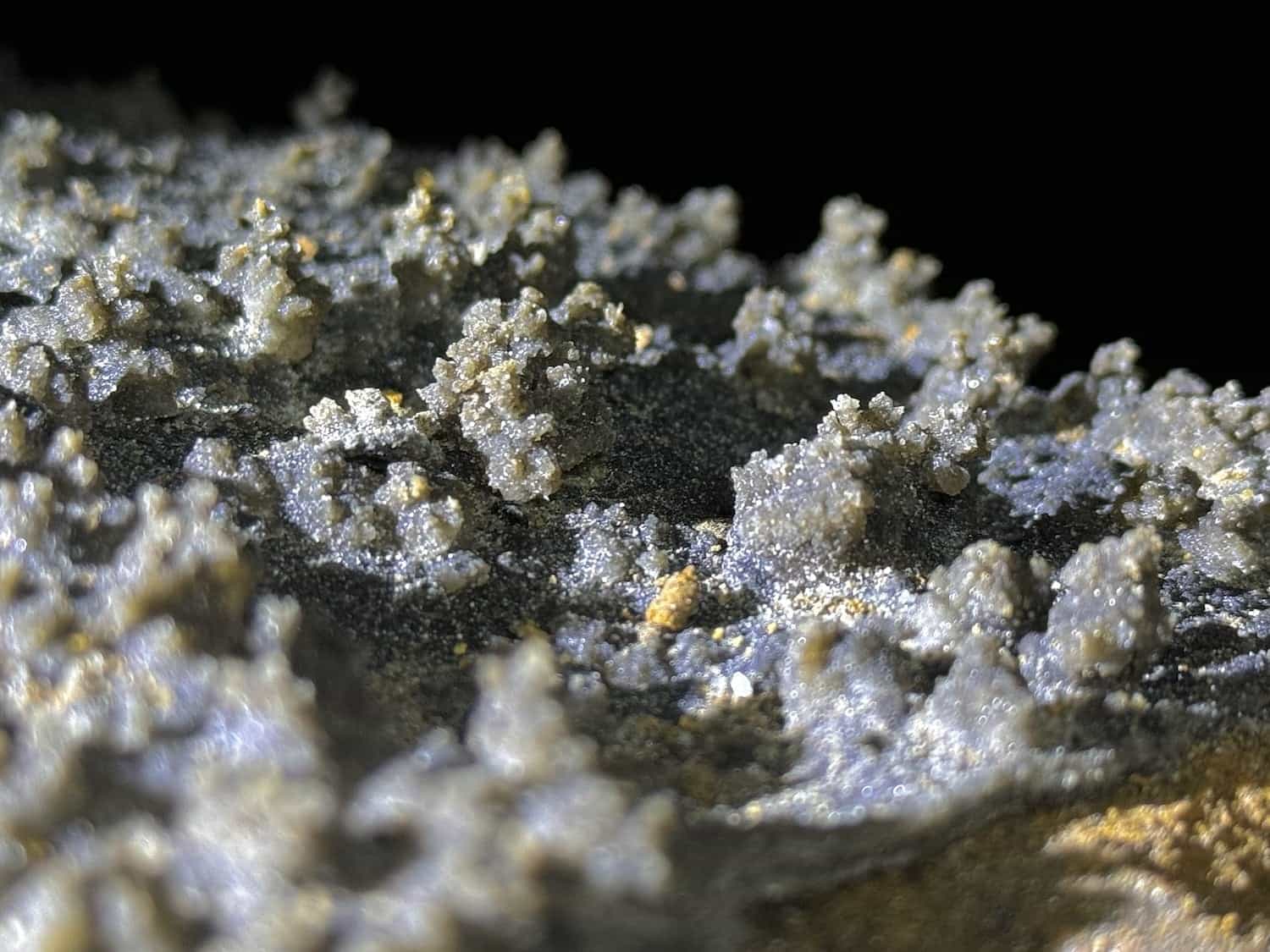
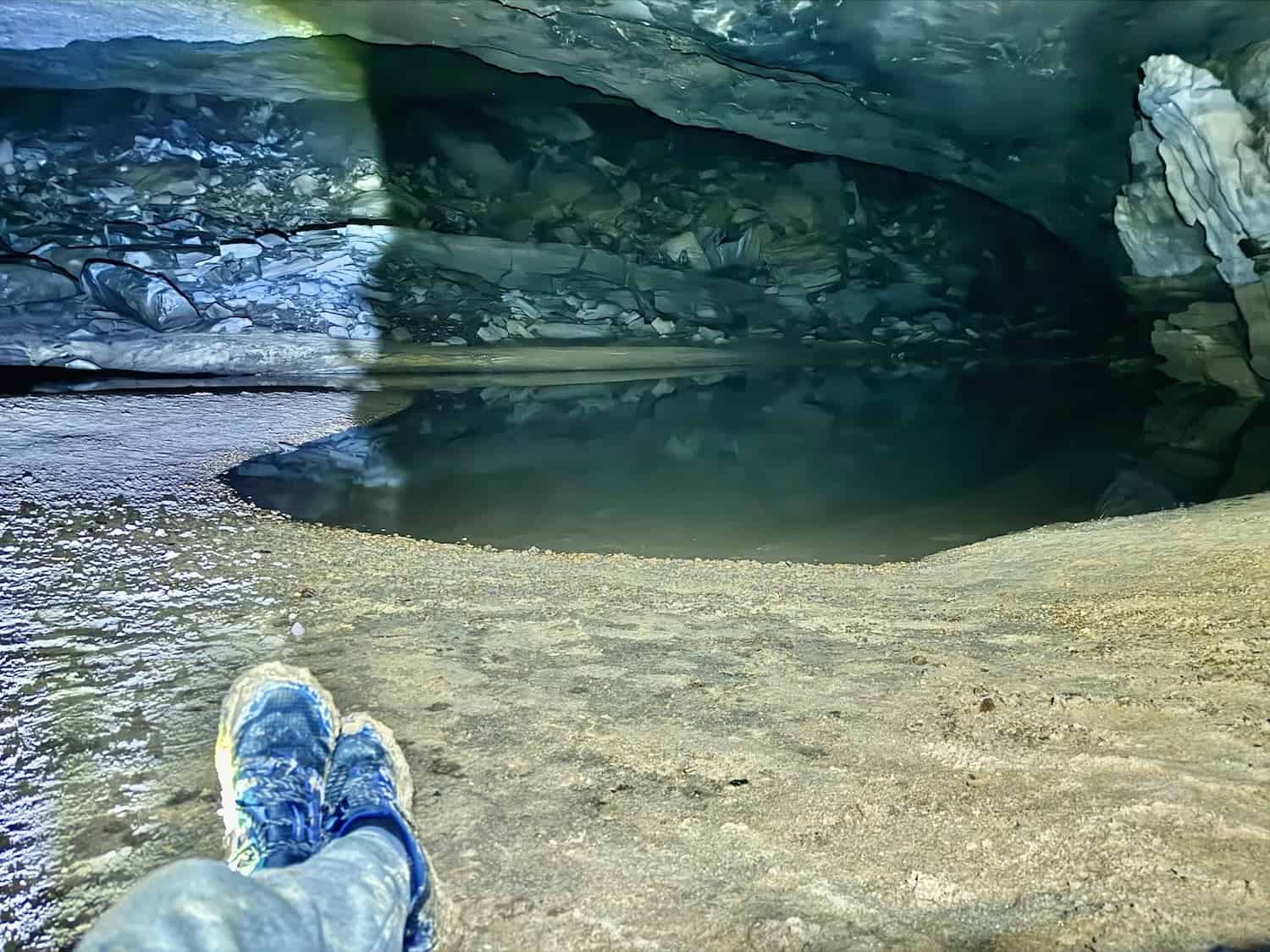
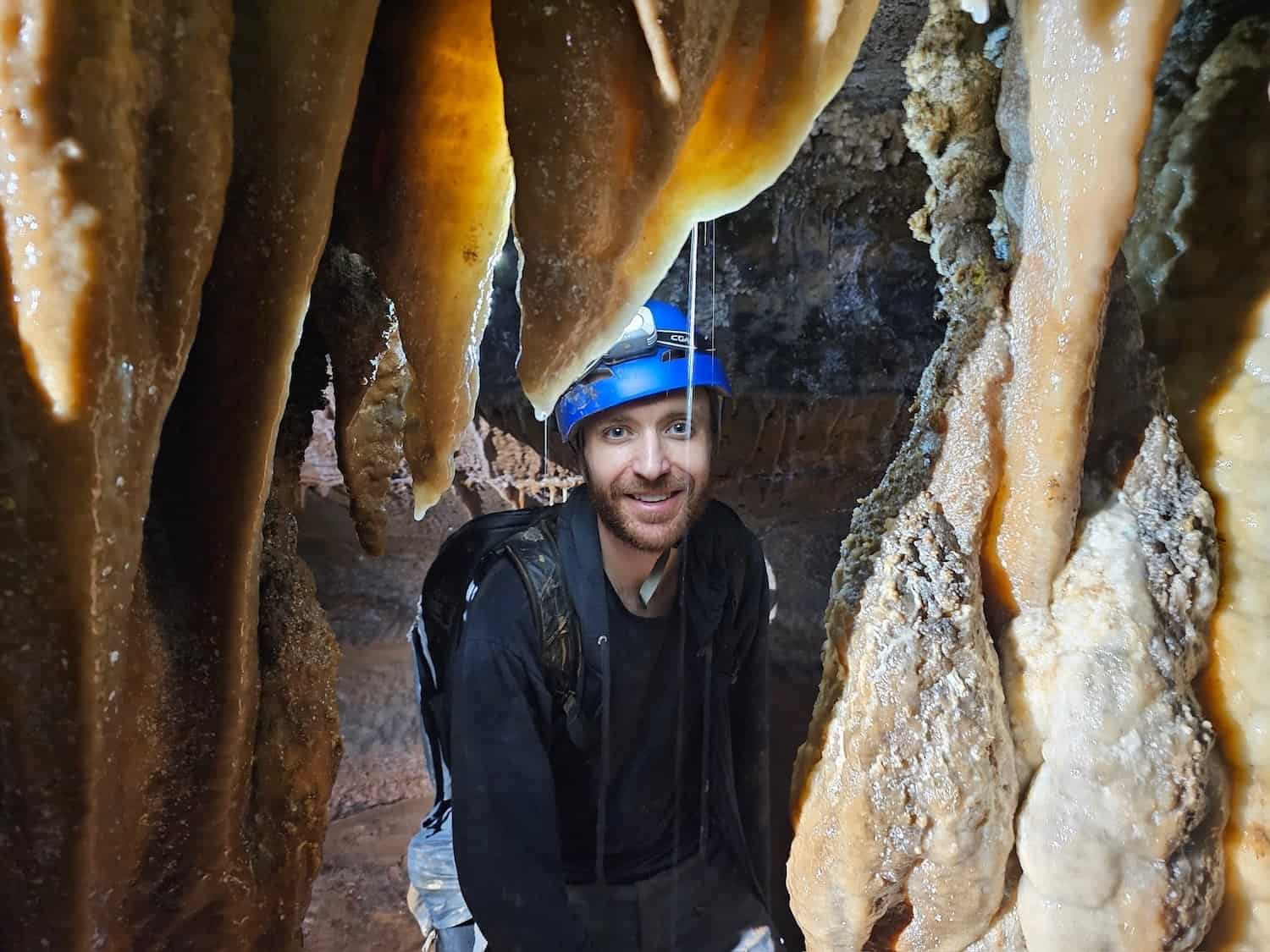

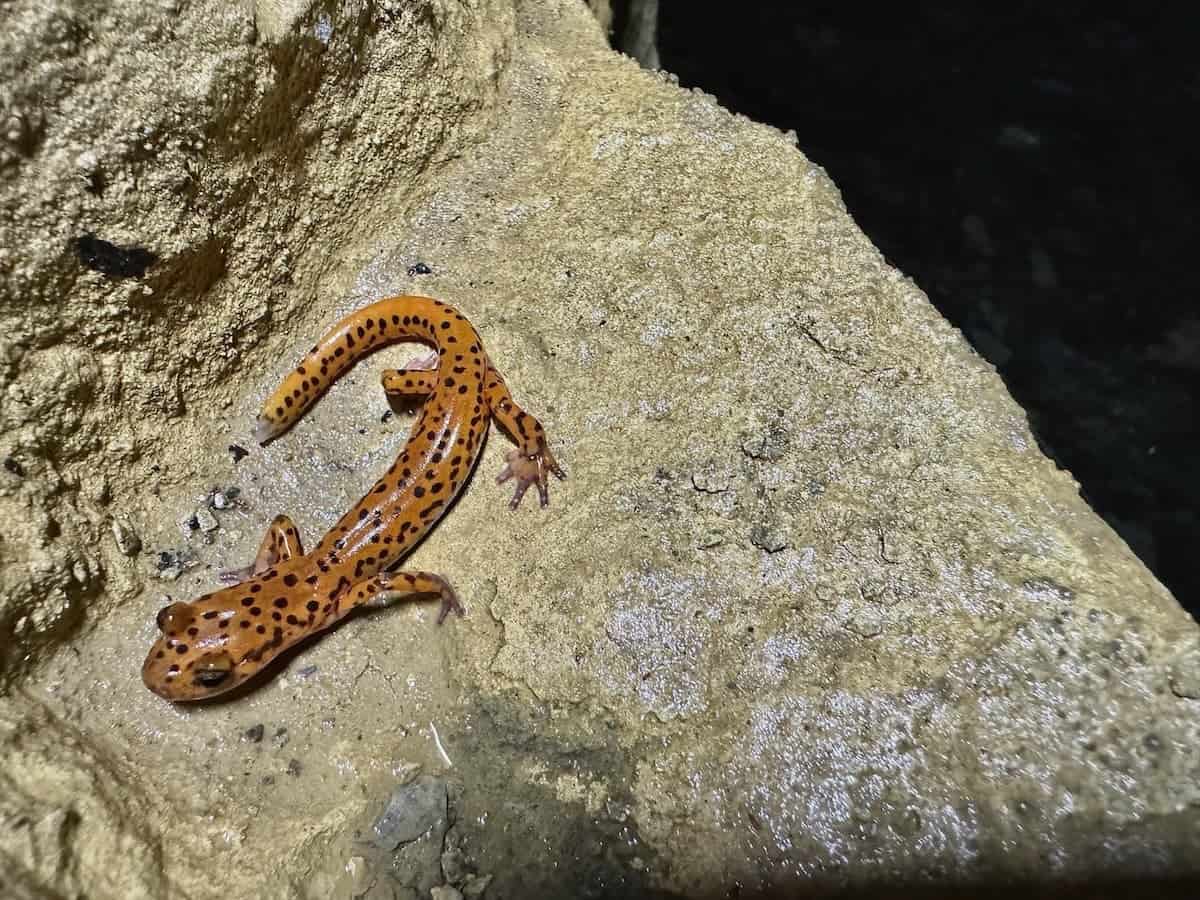
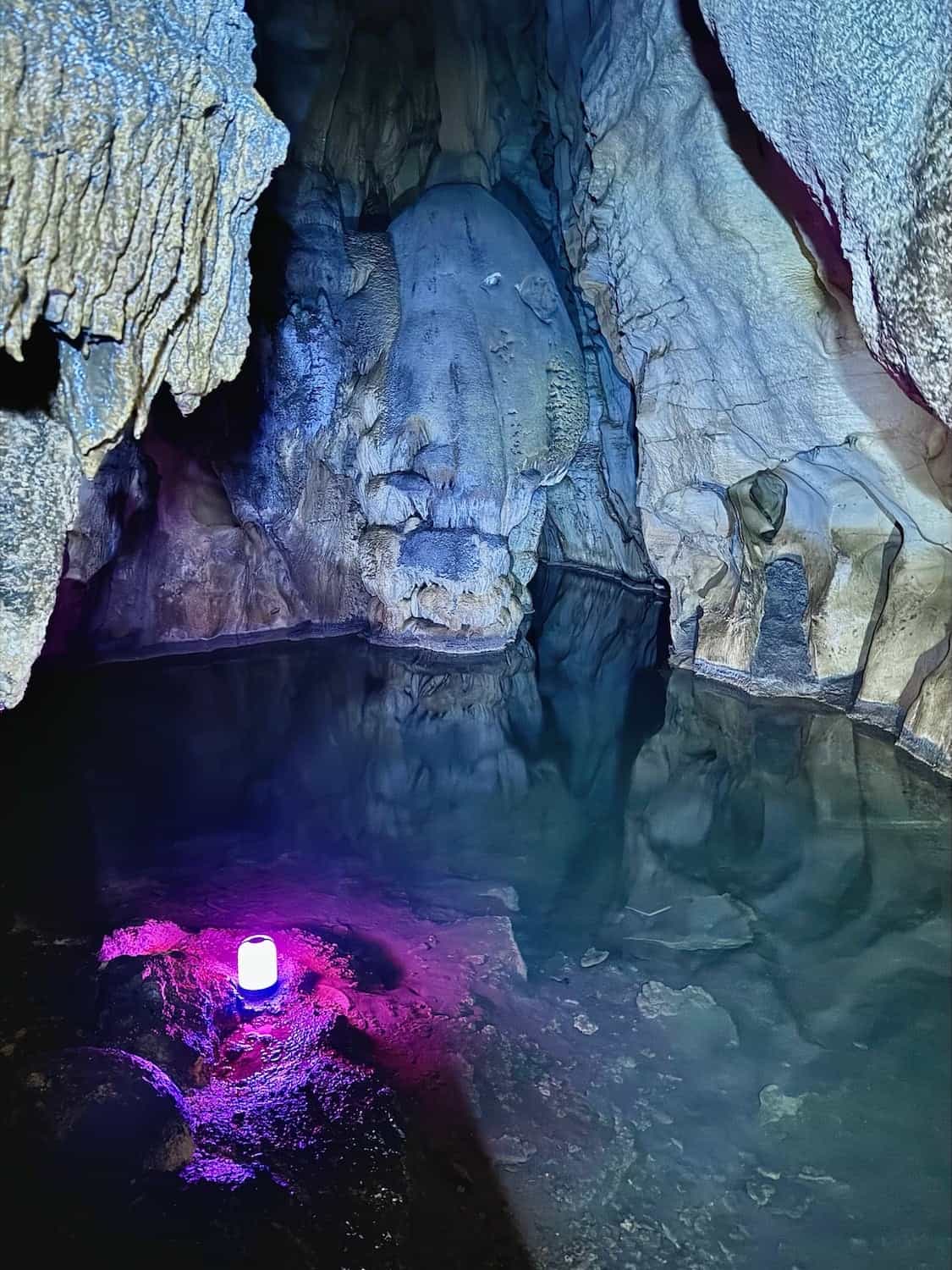


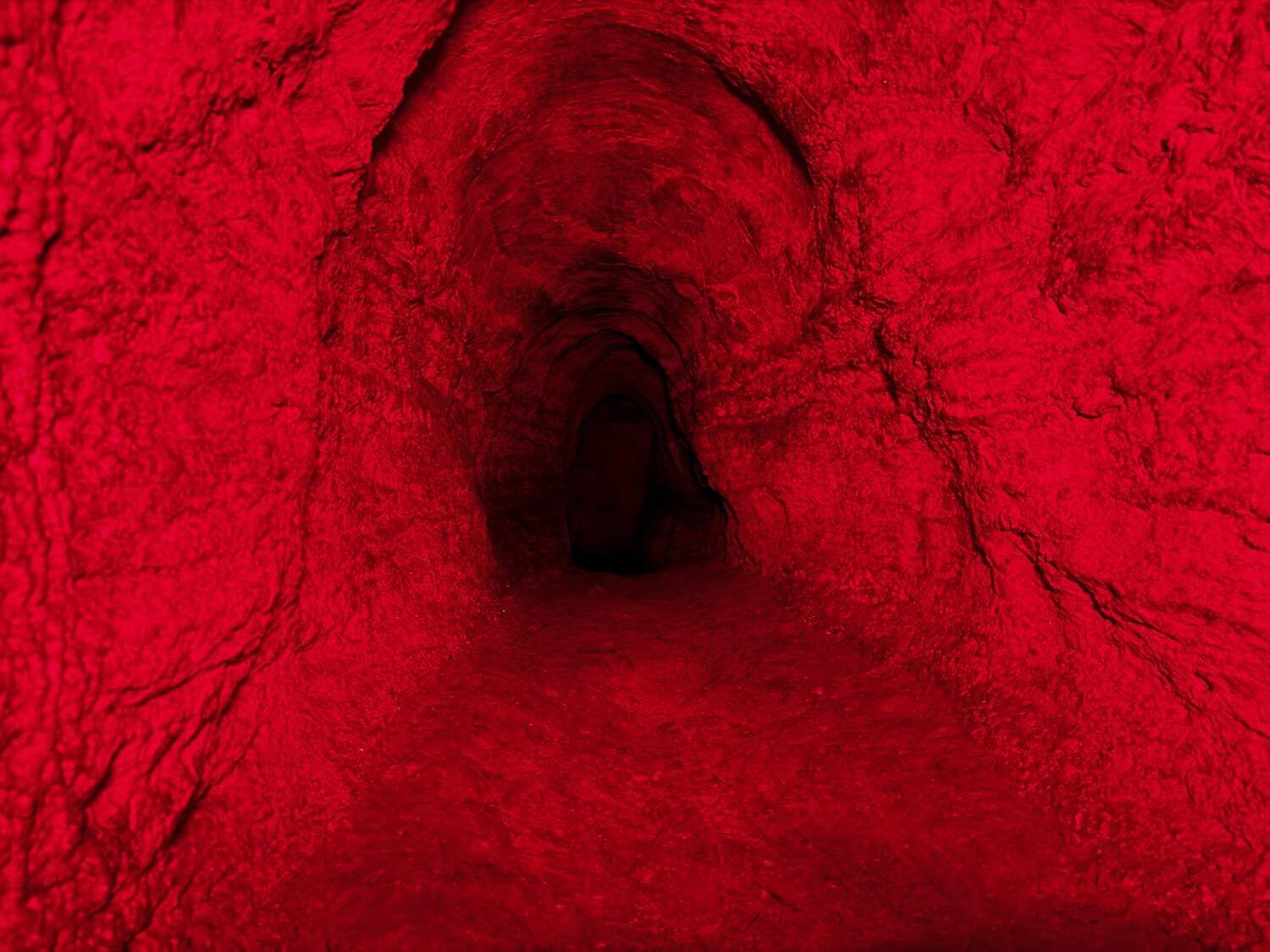
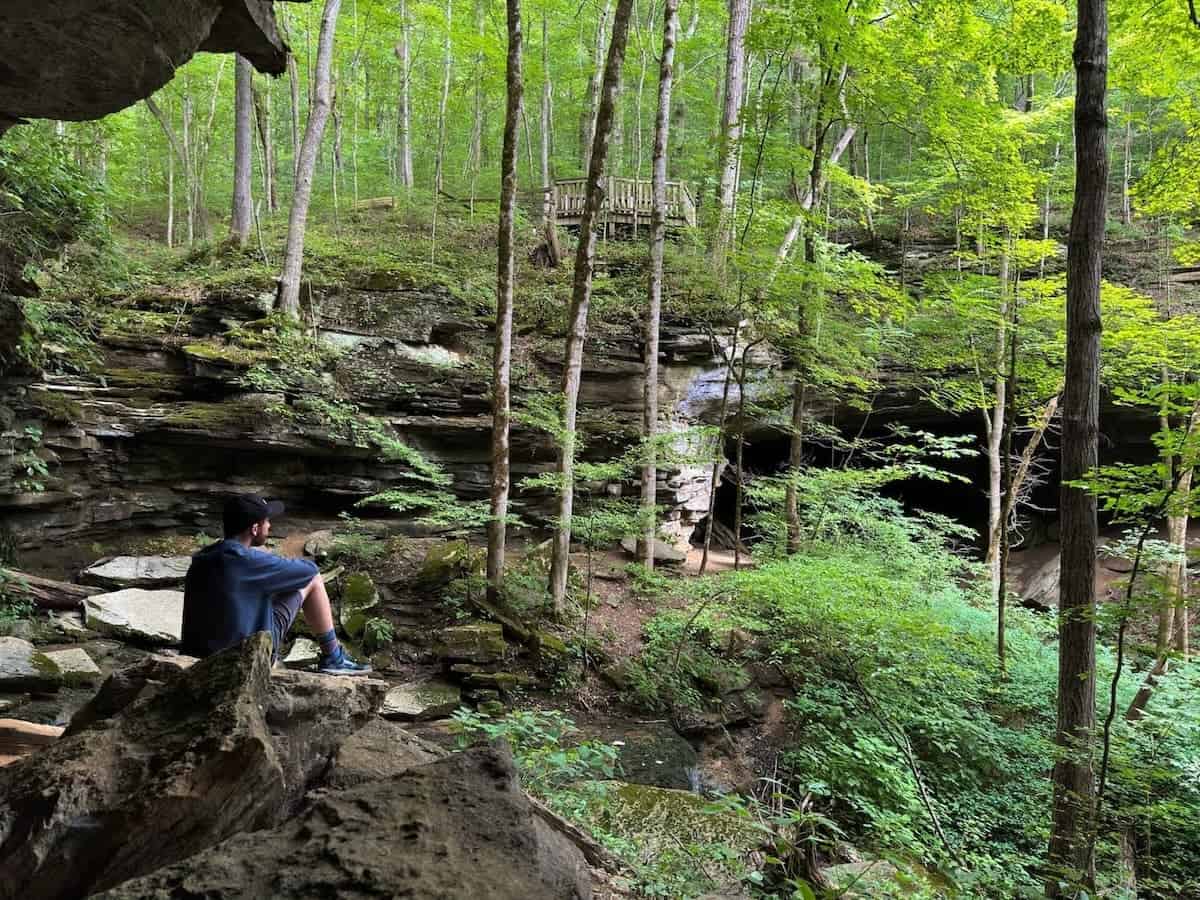
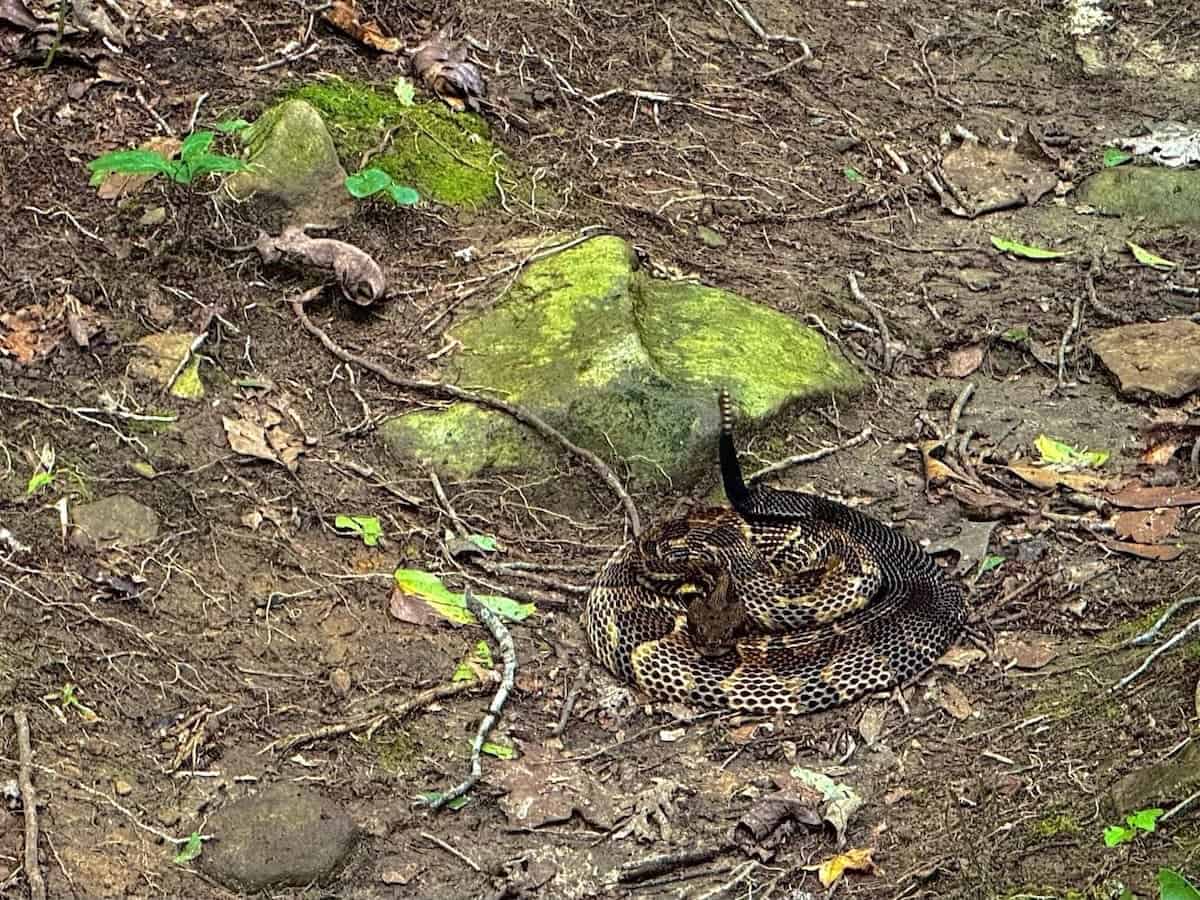
How Can I Improve This Guide?
